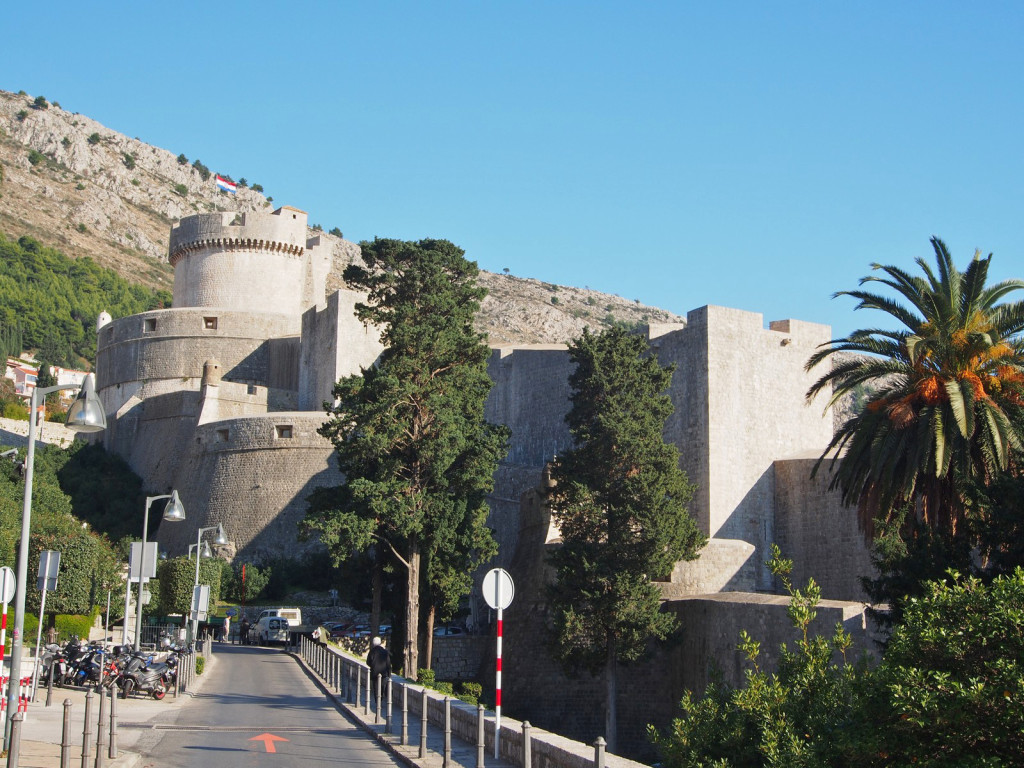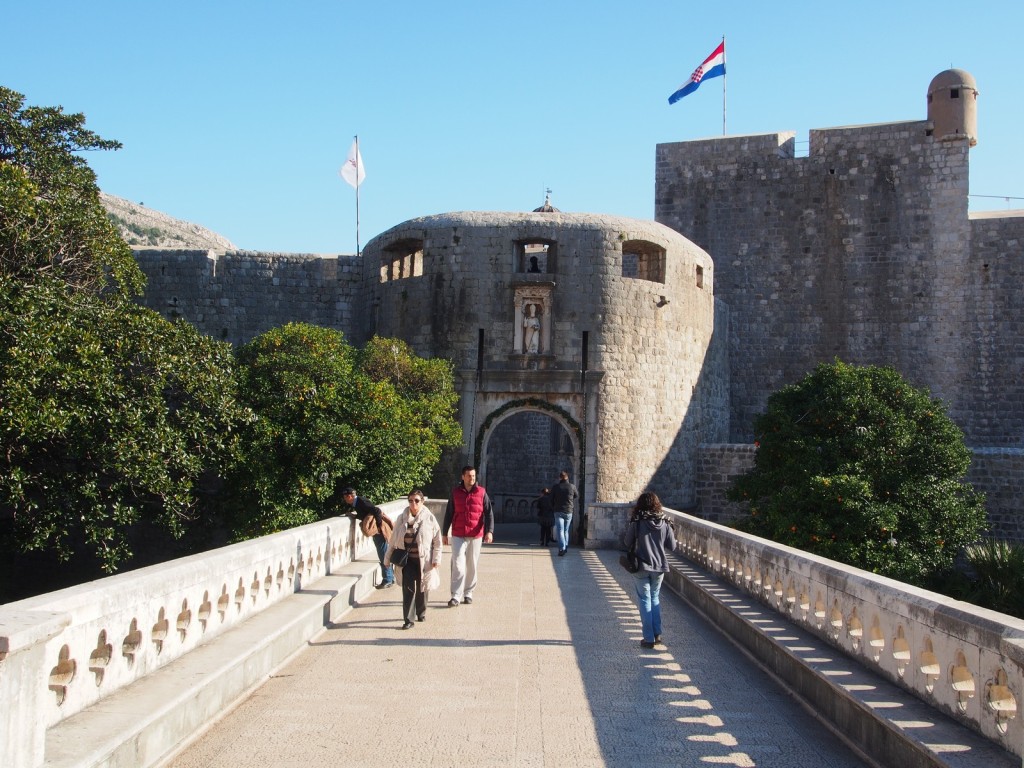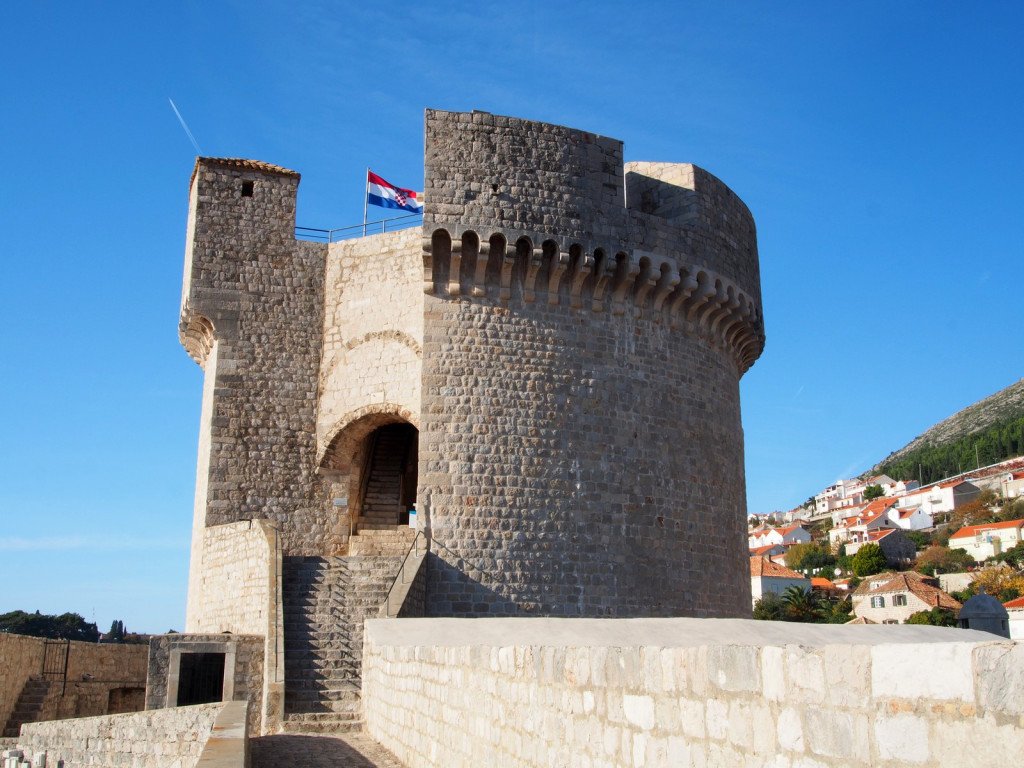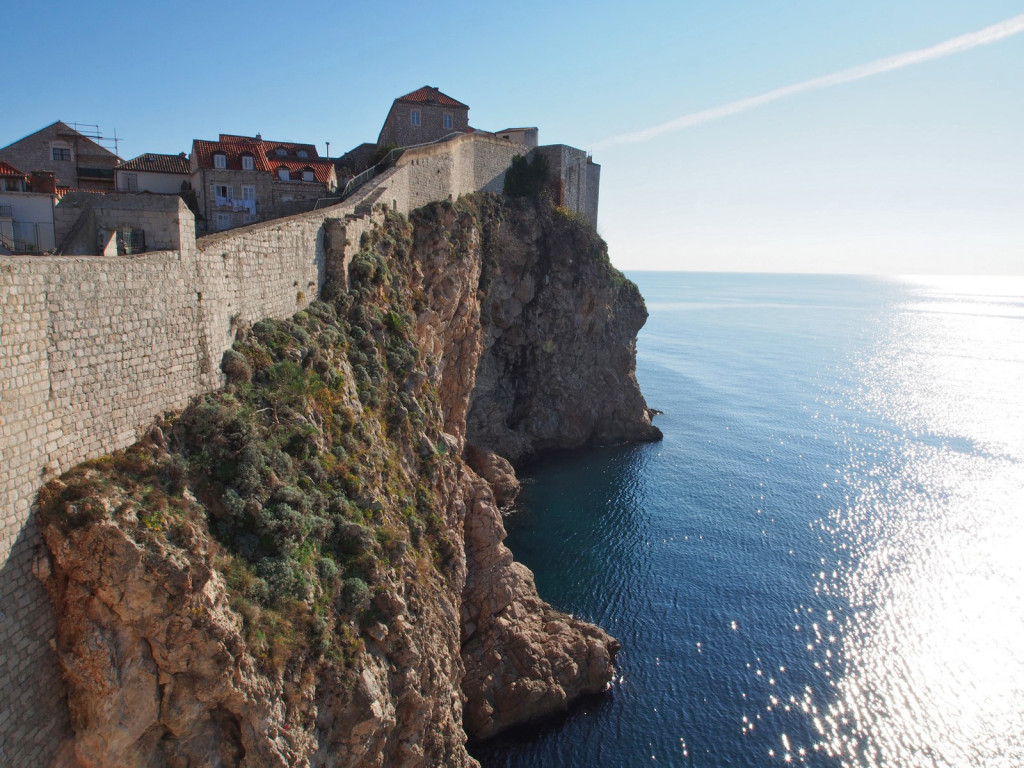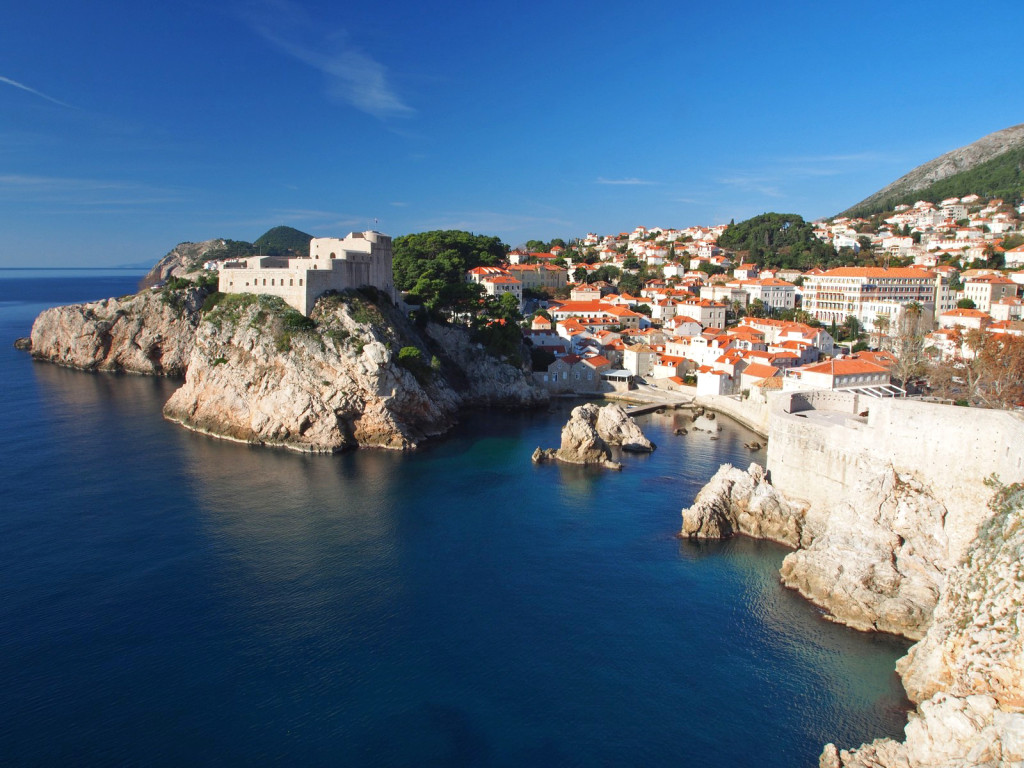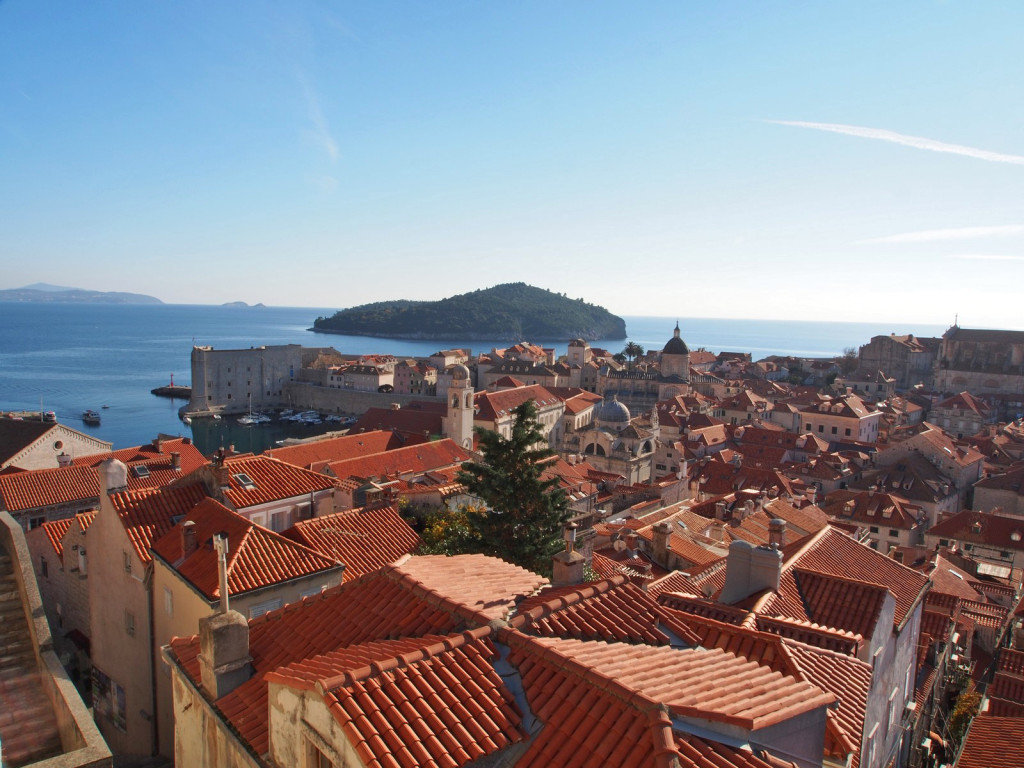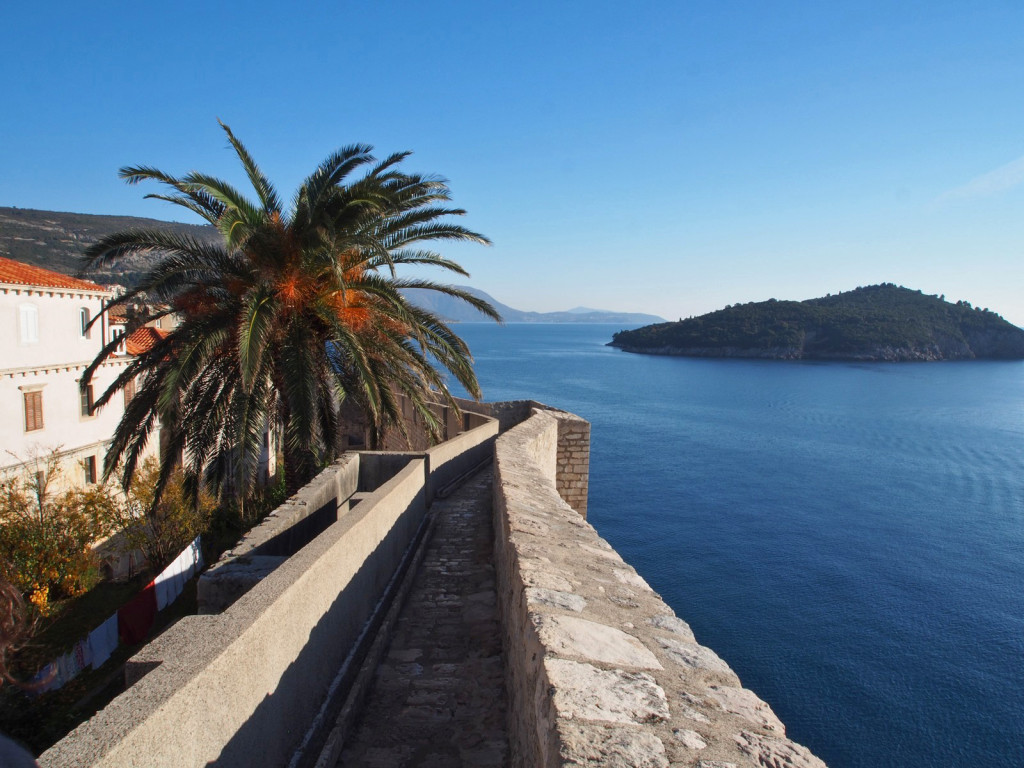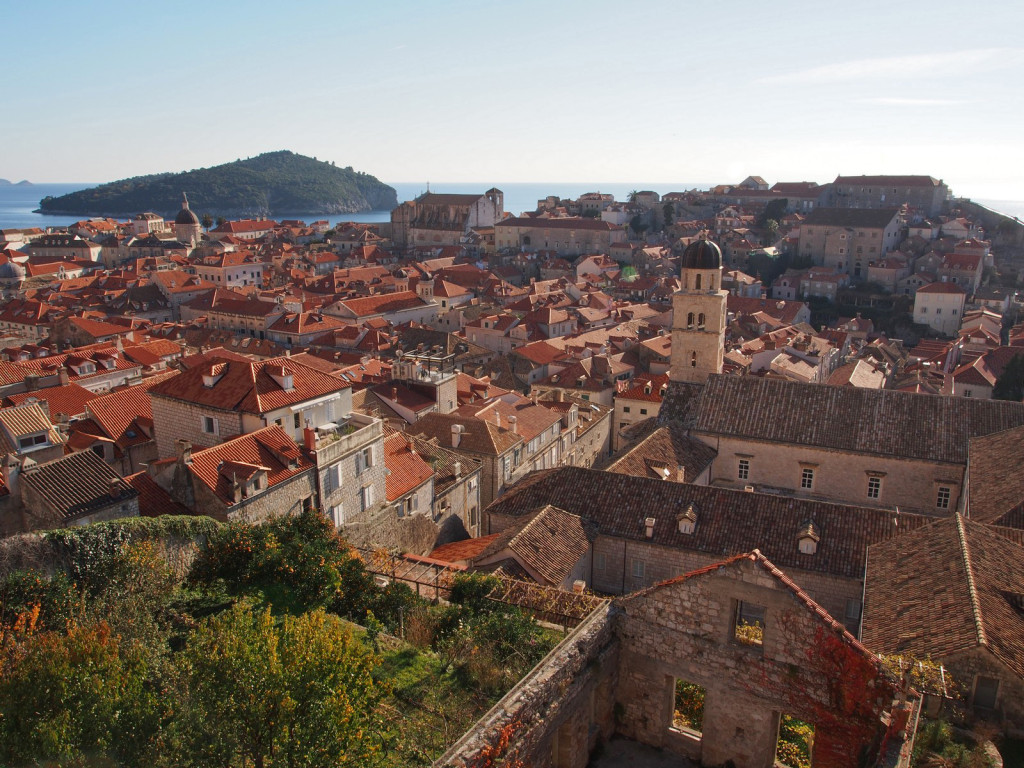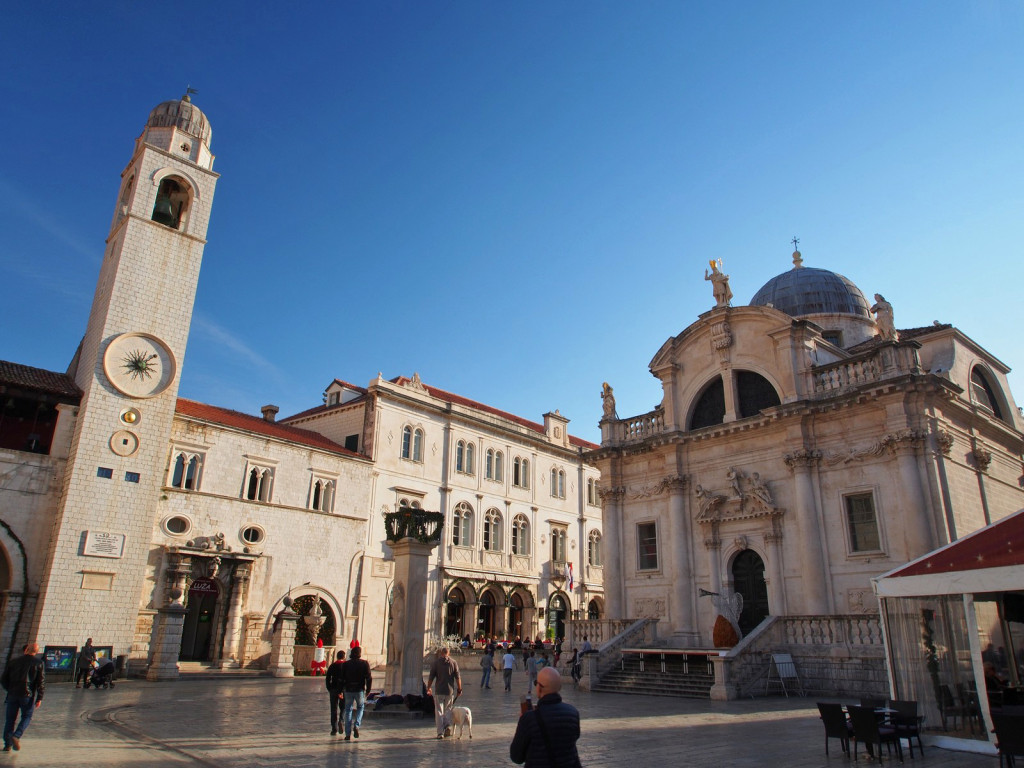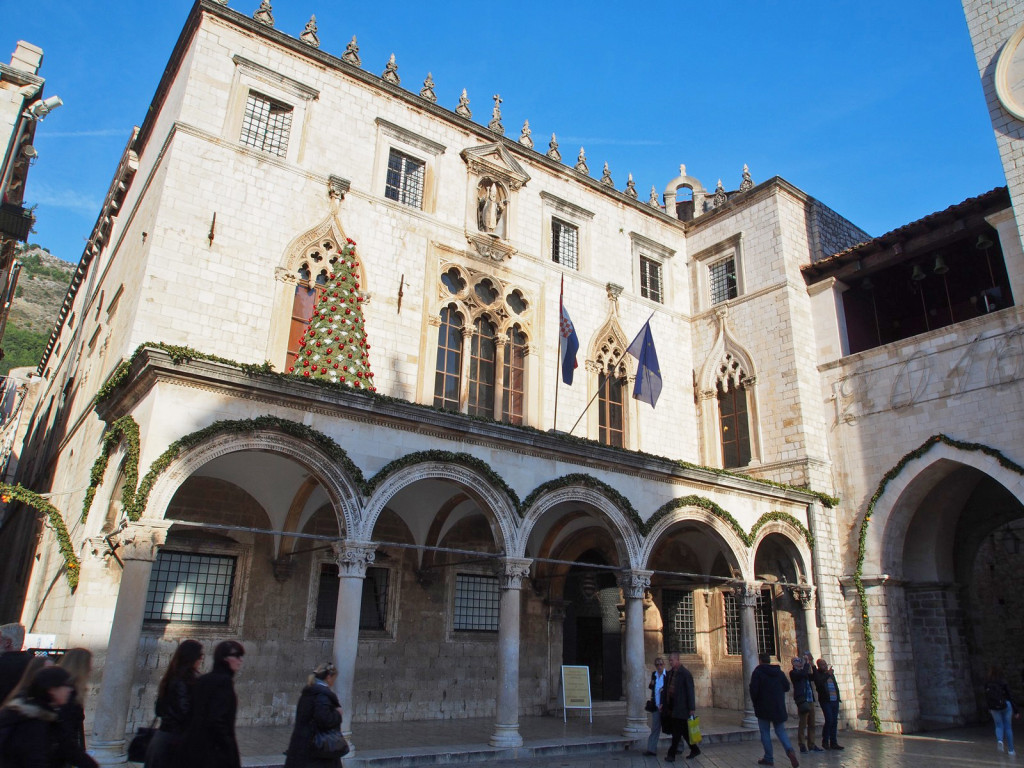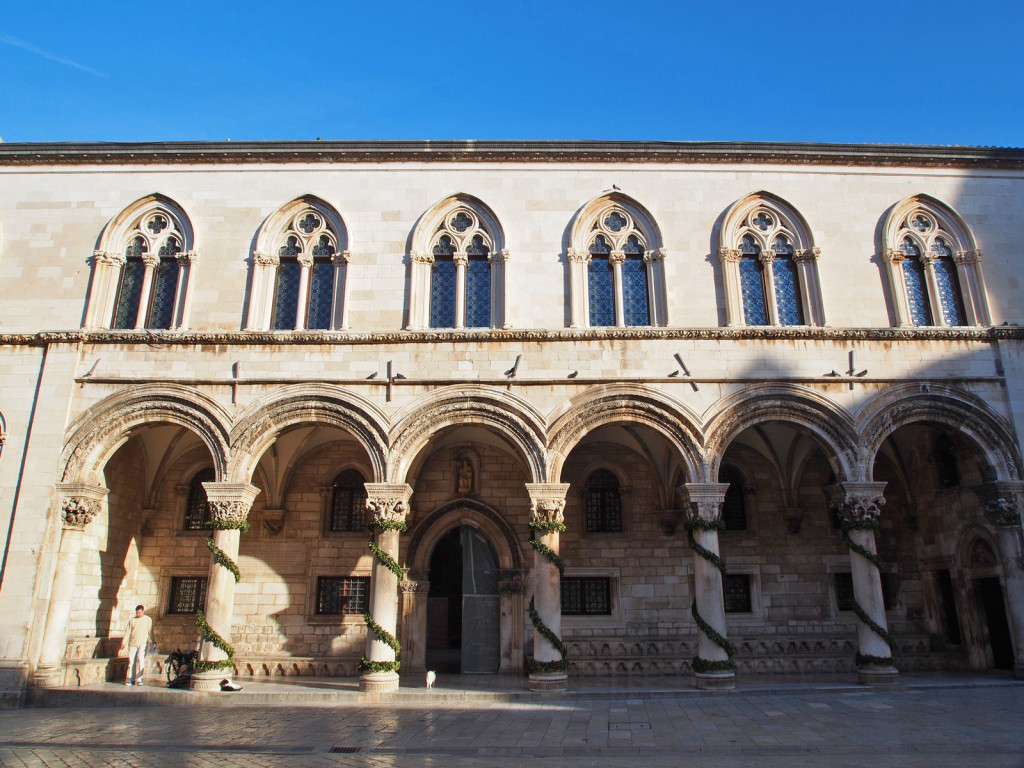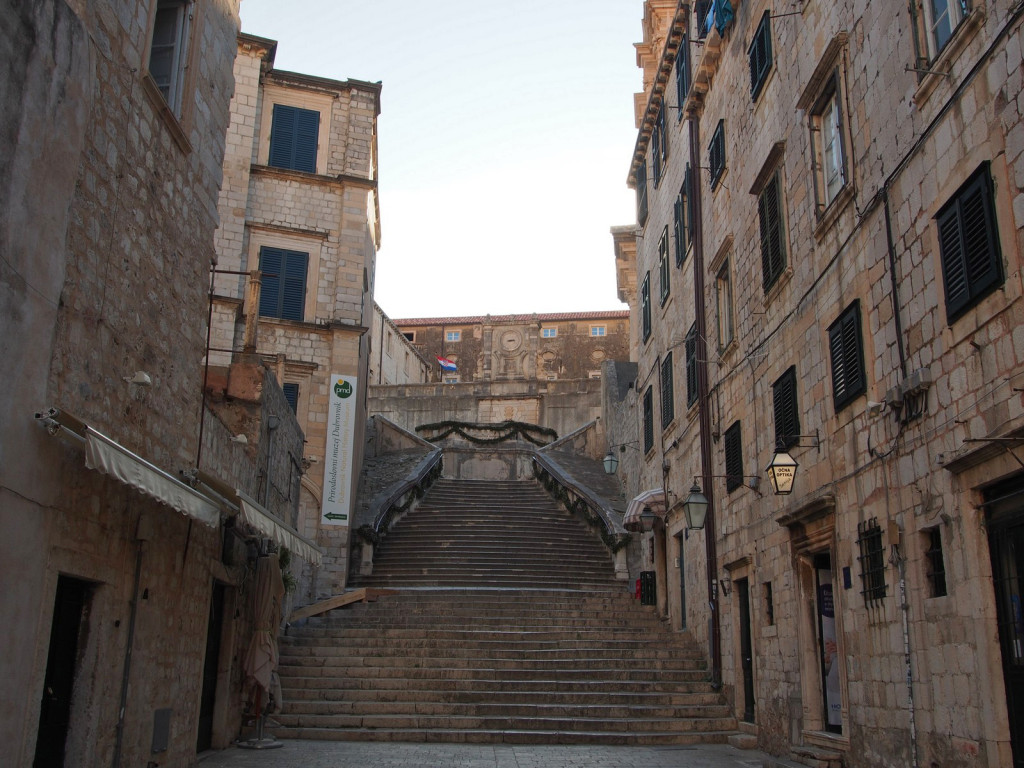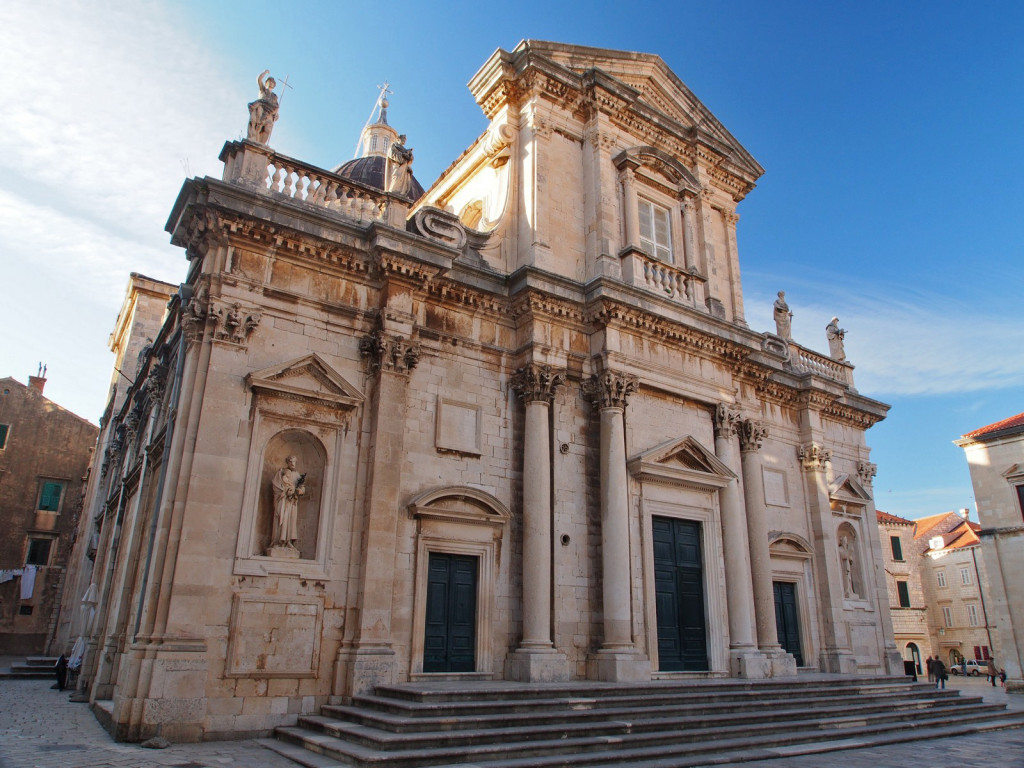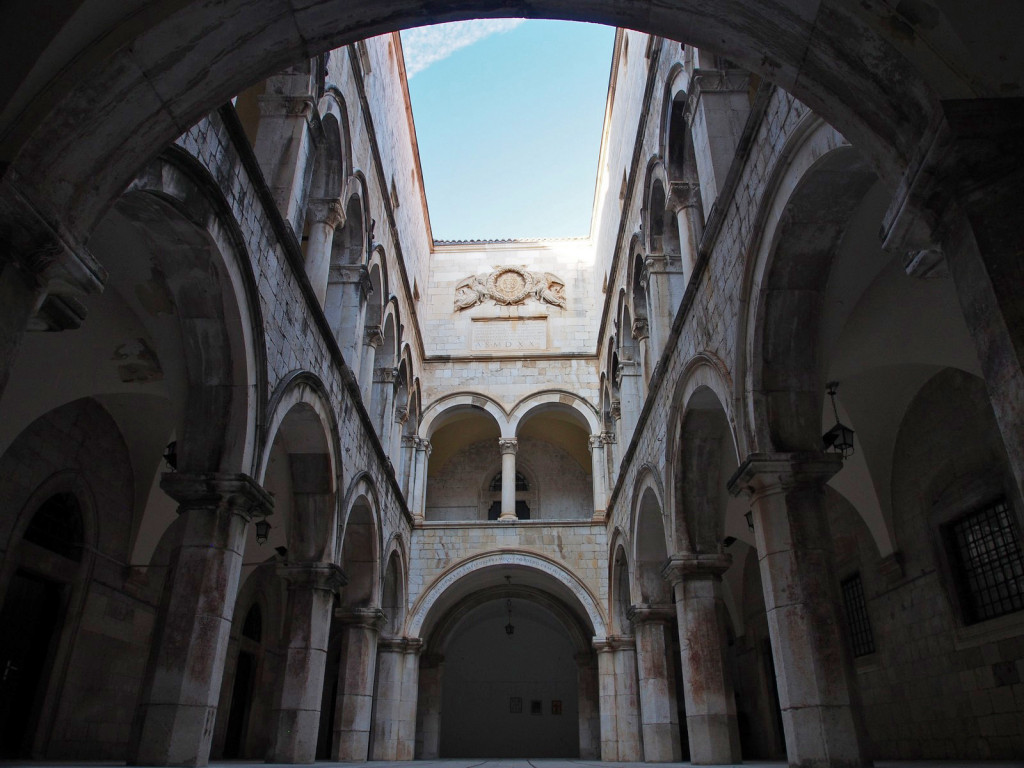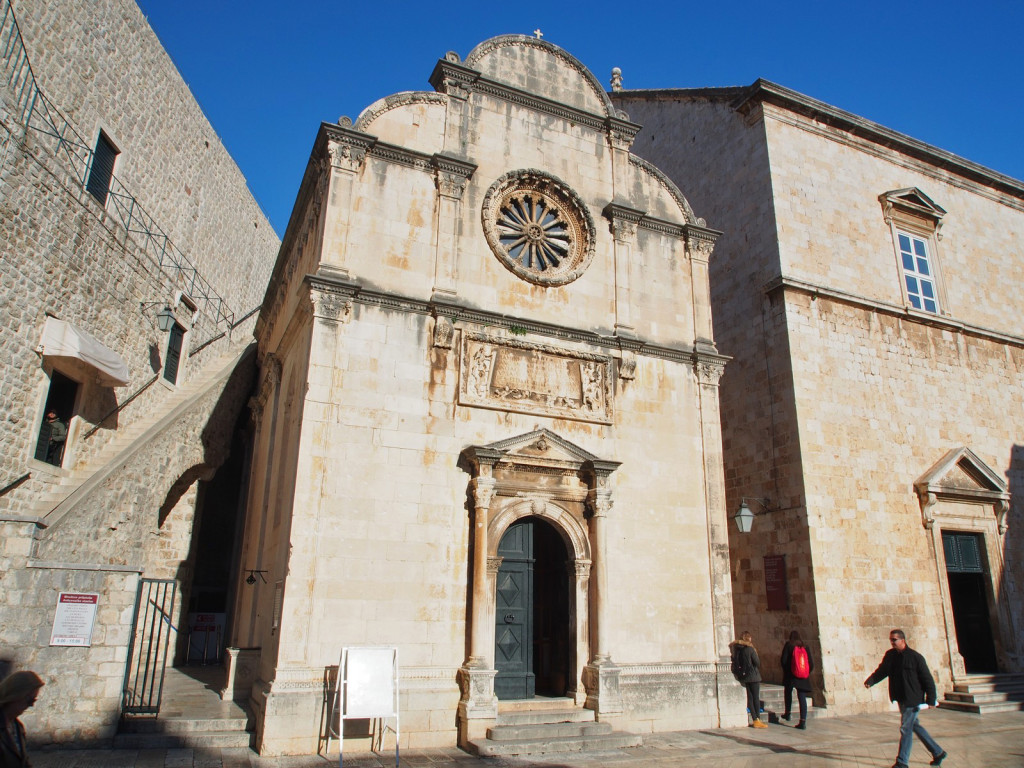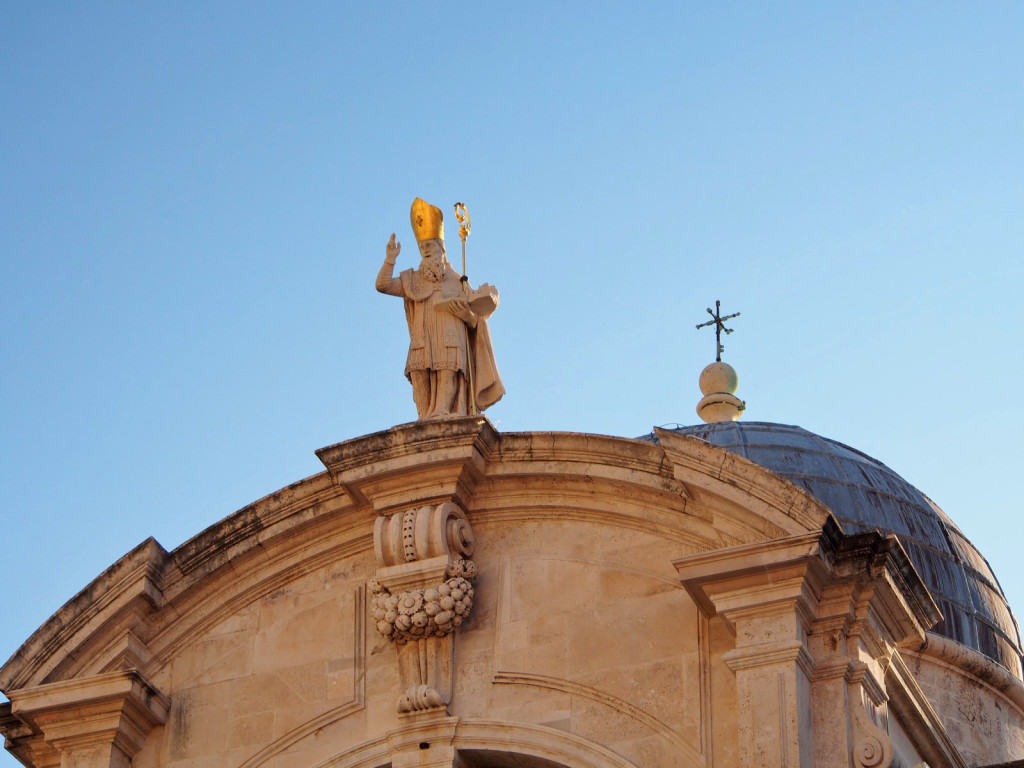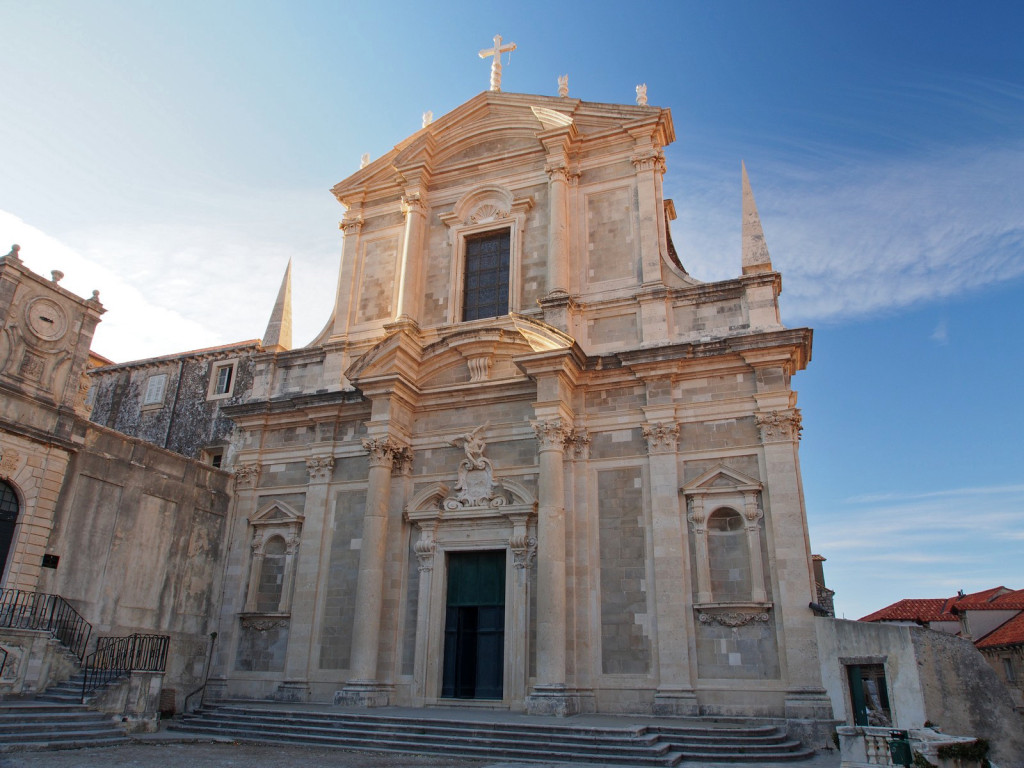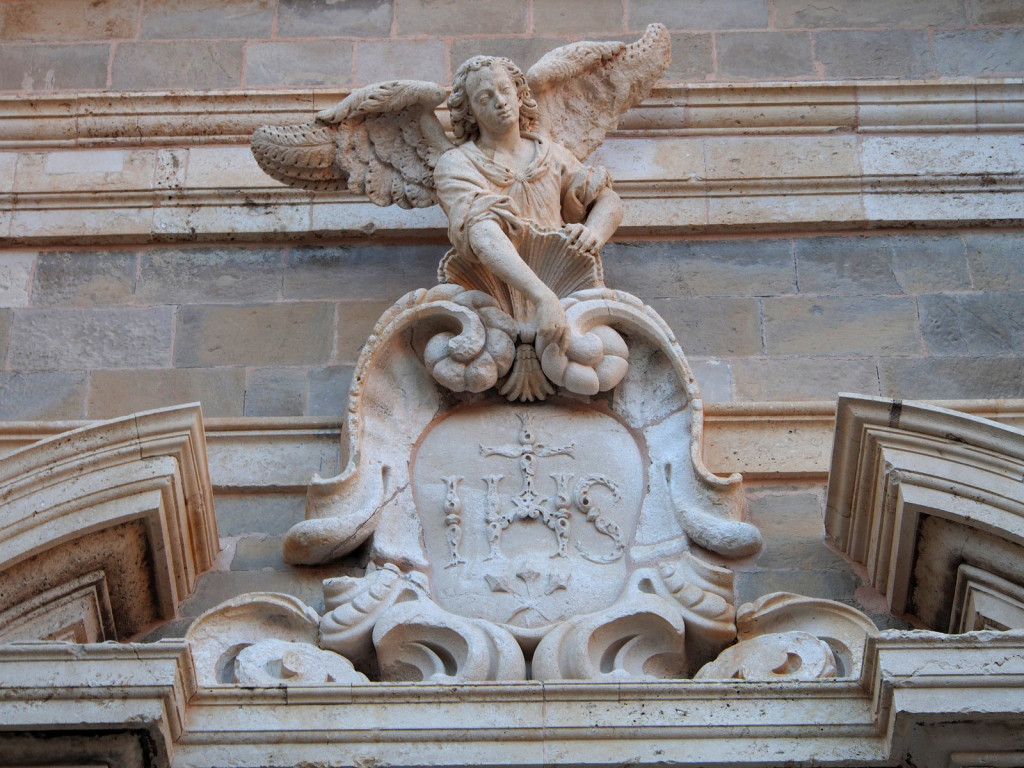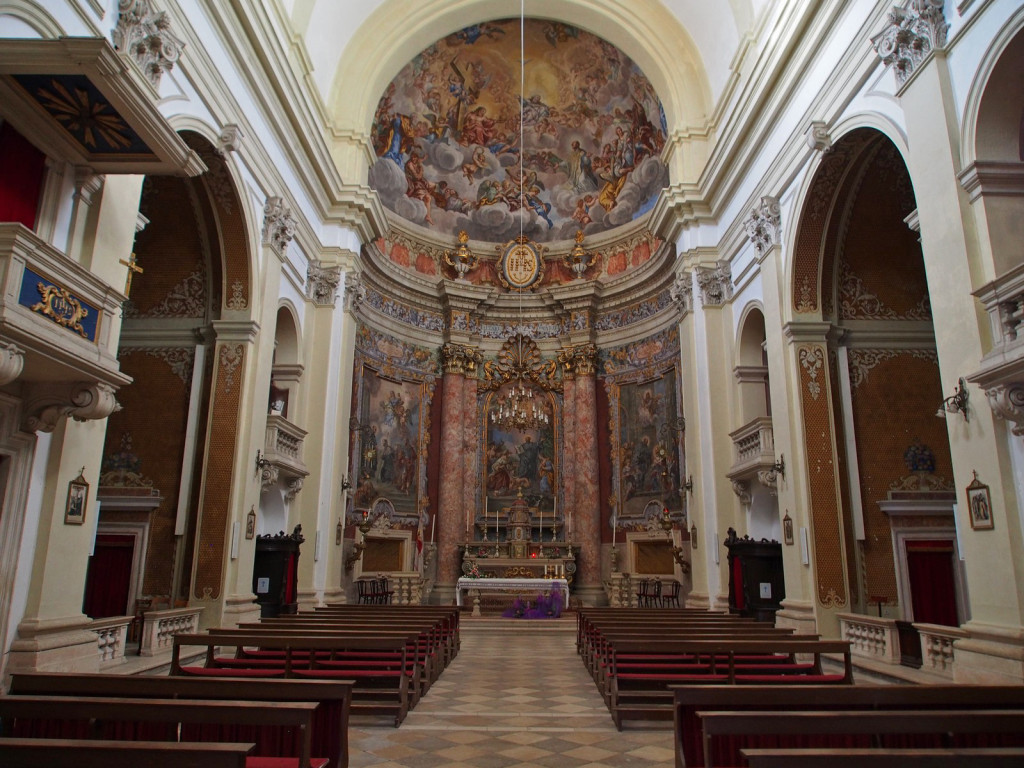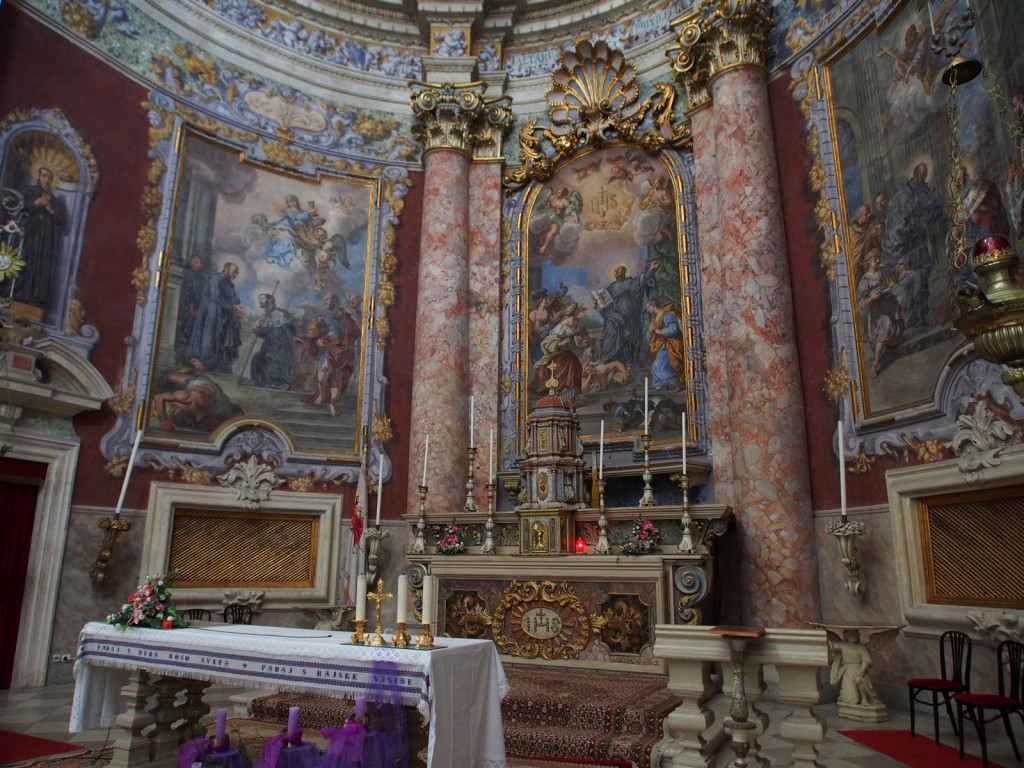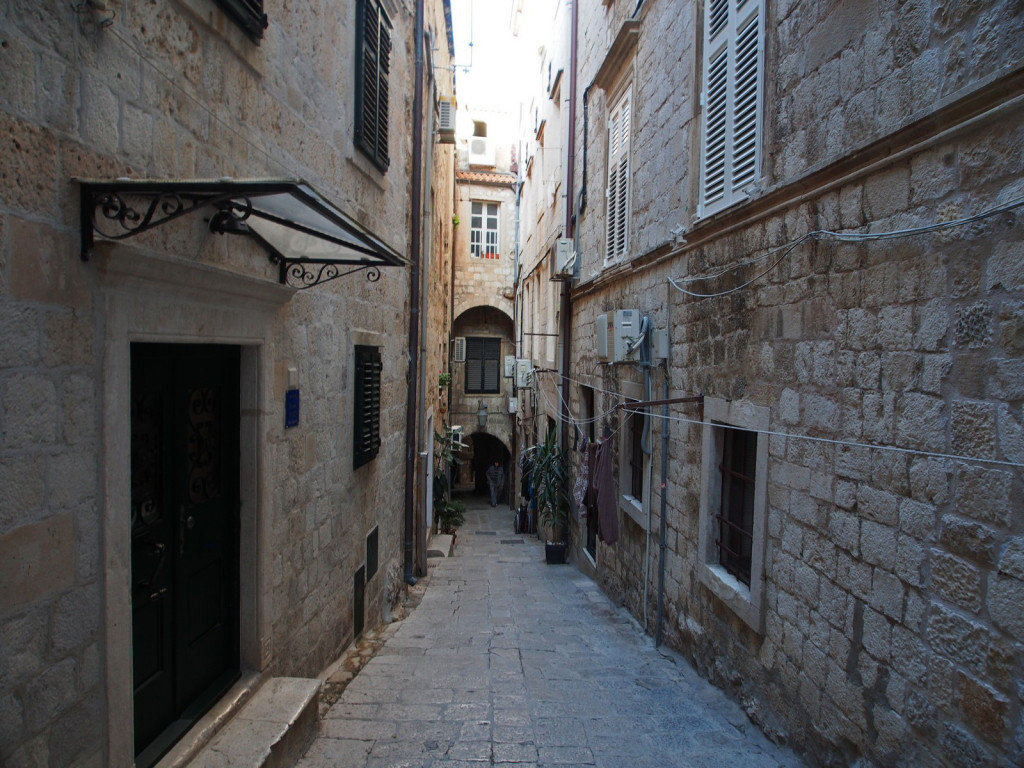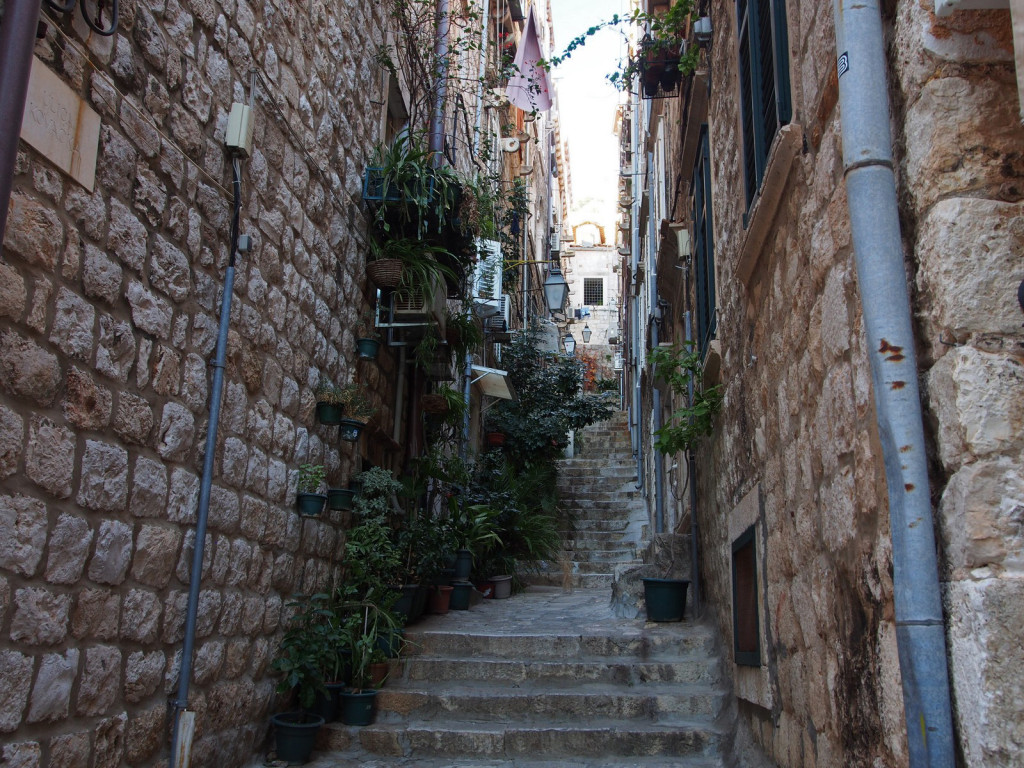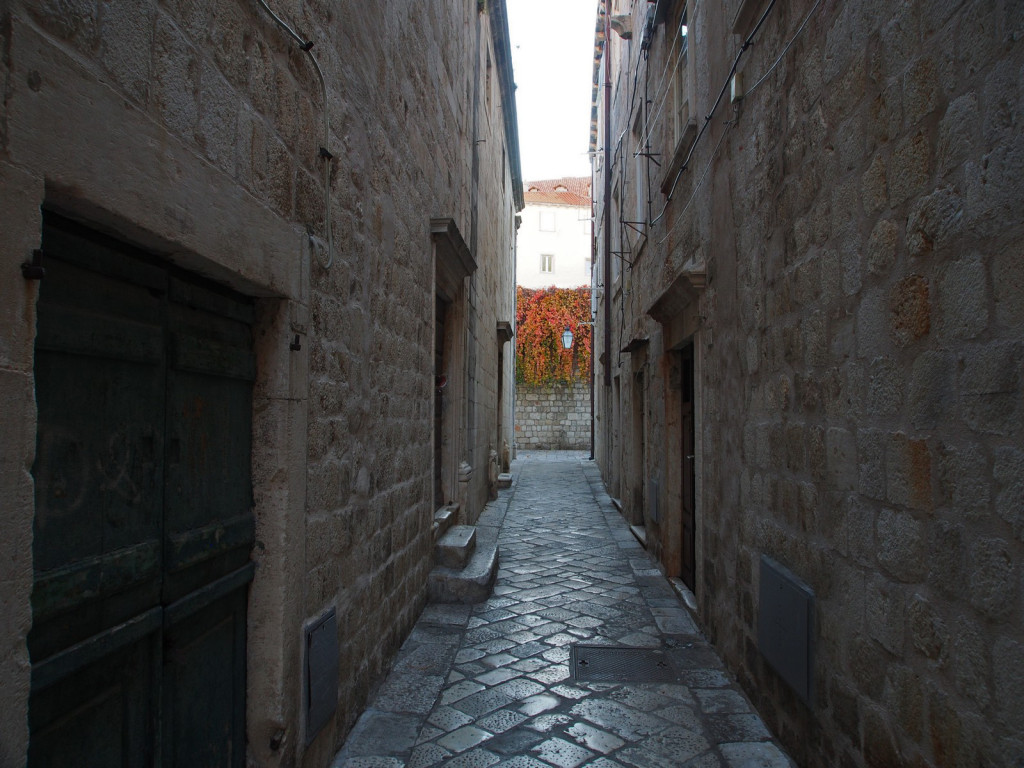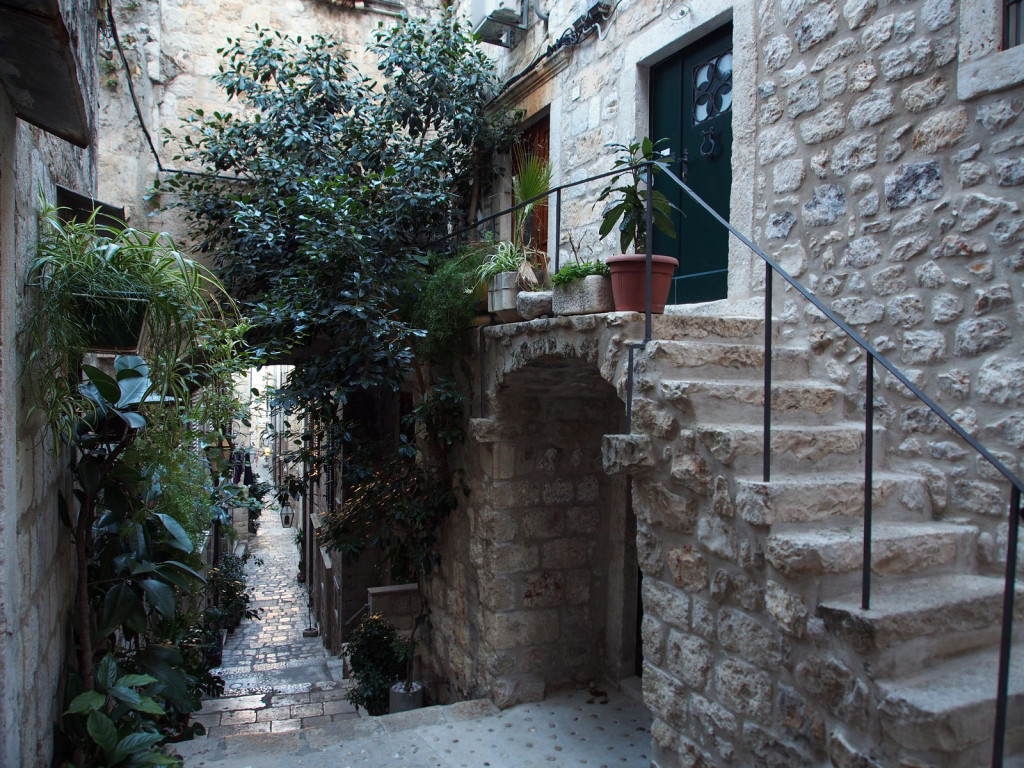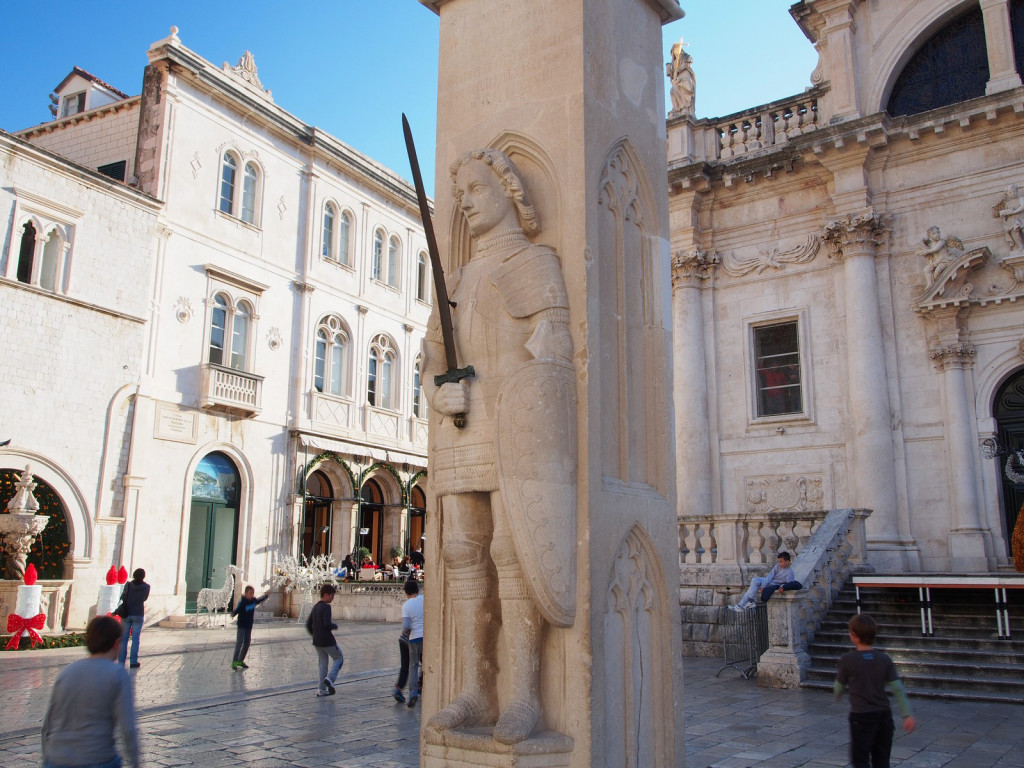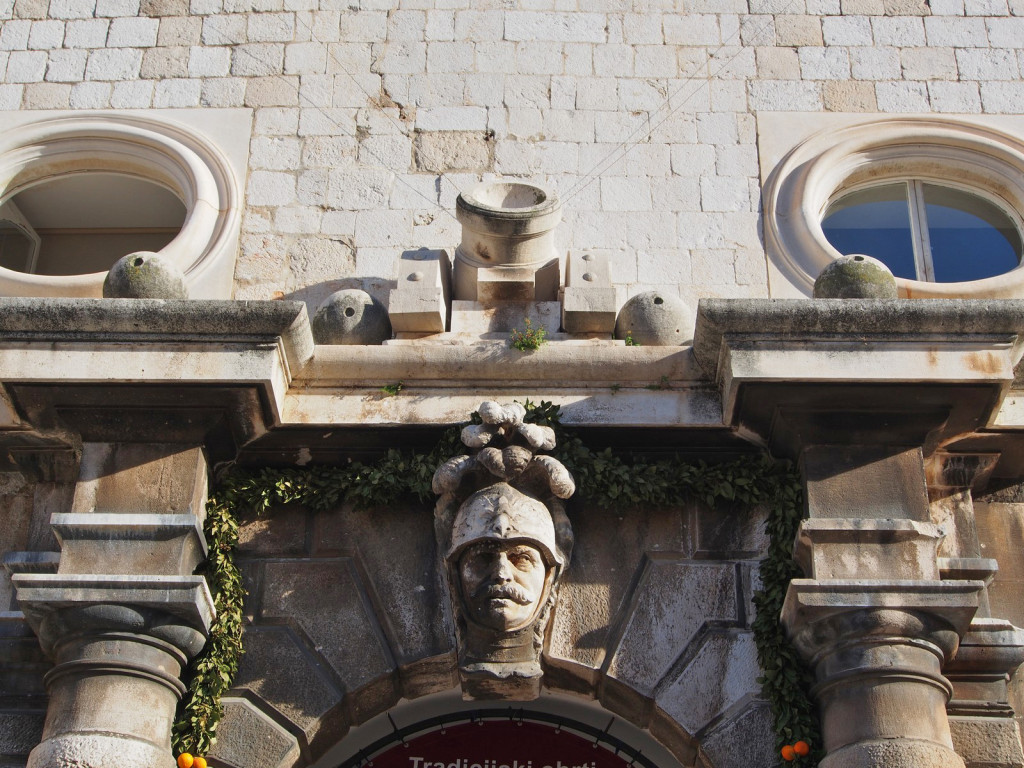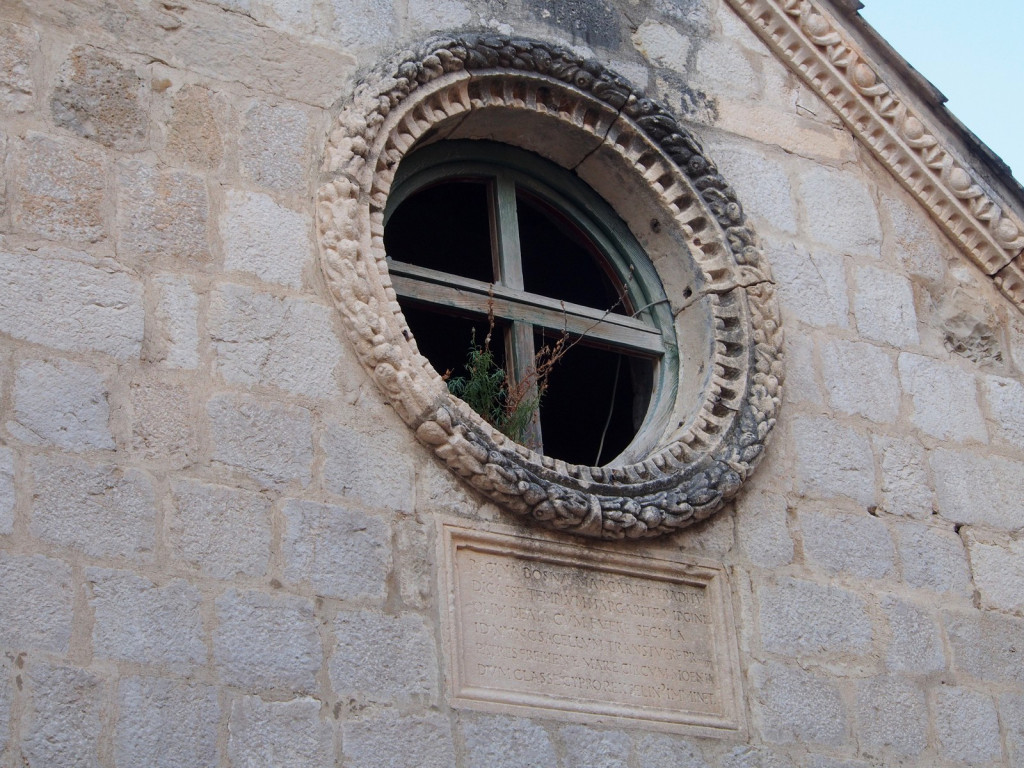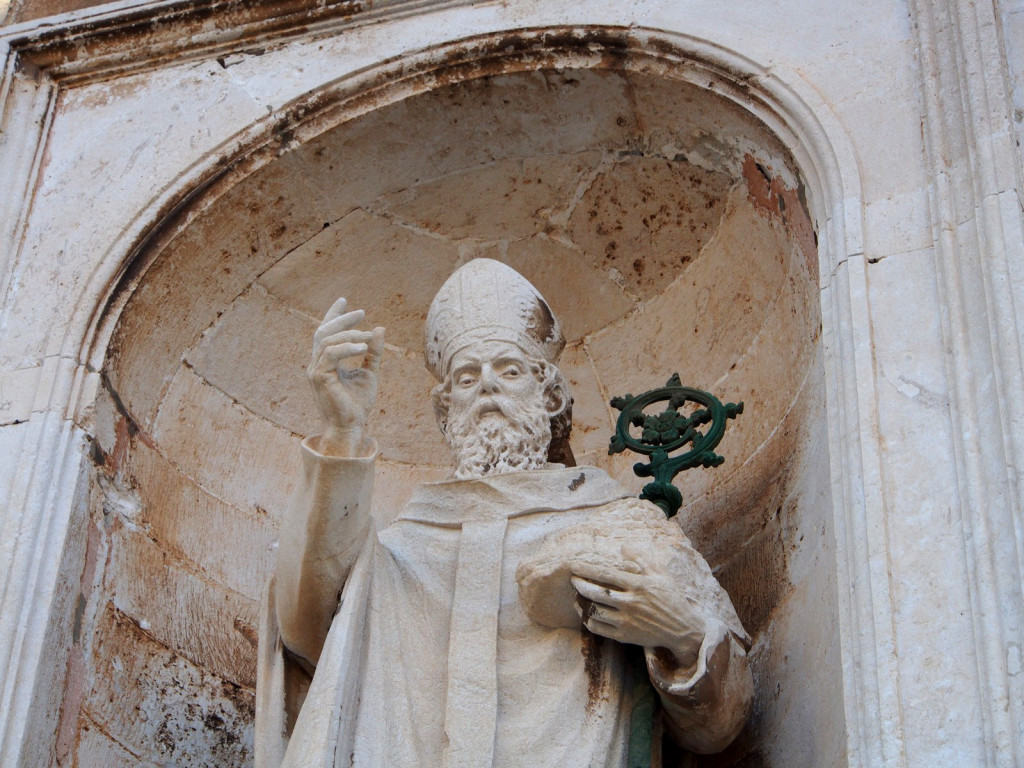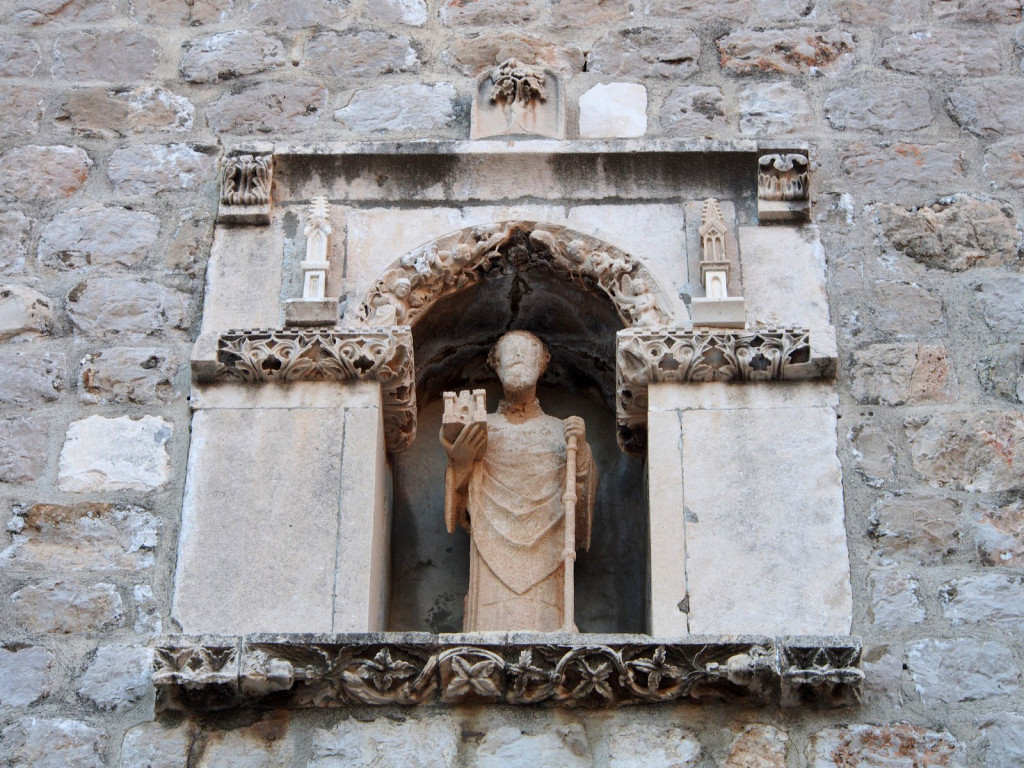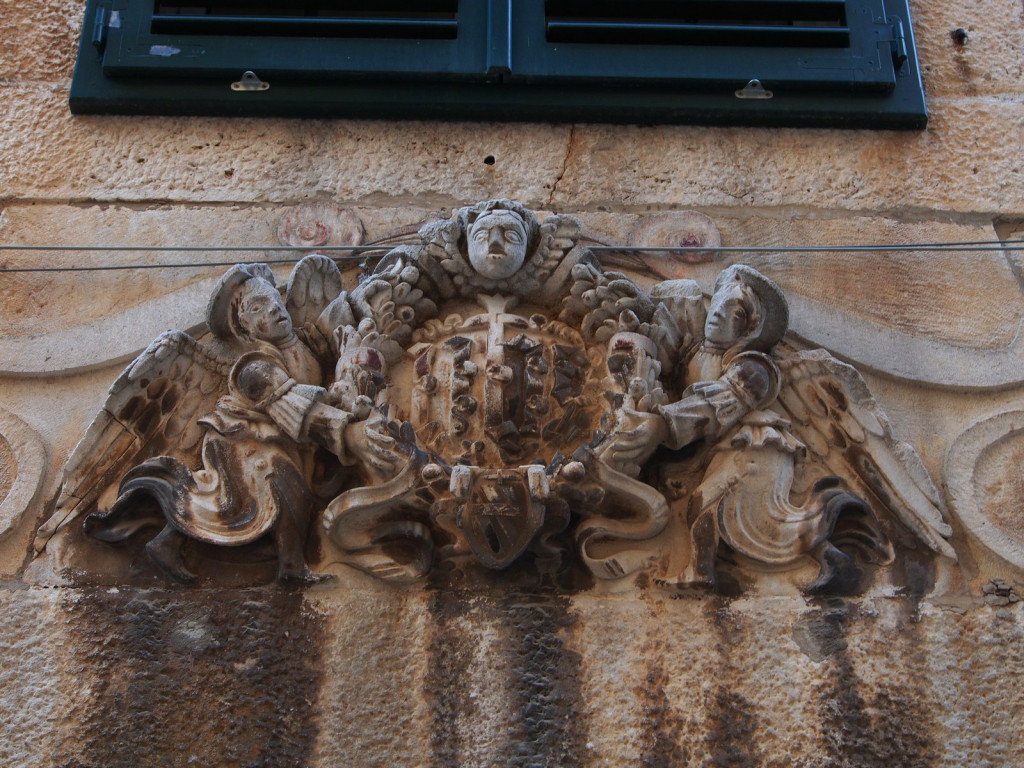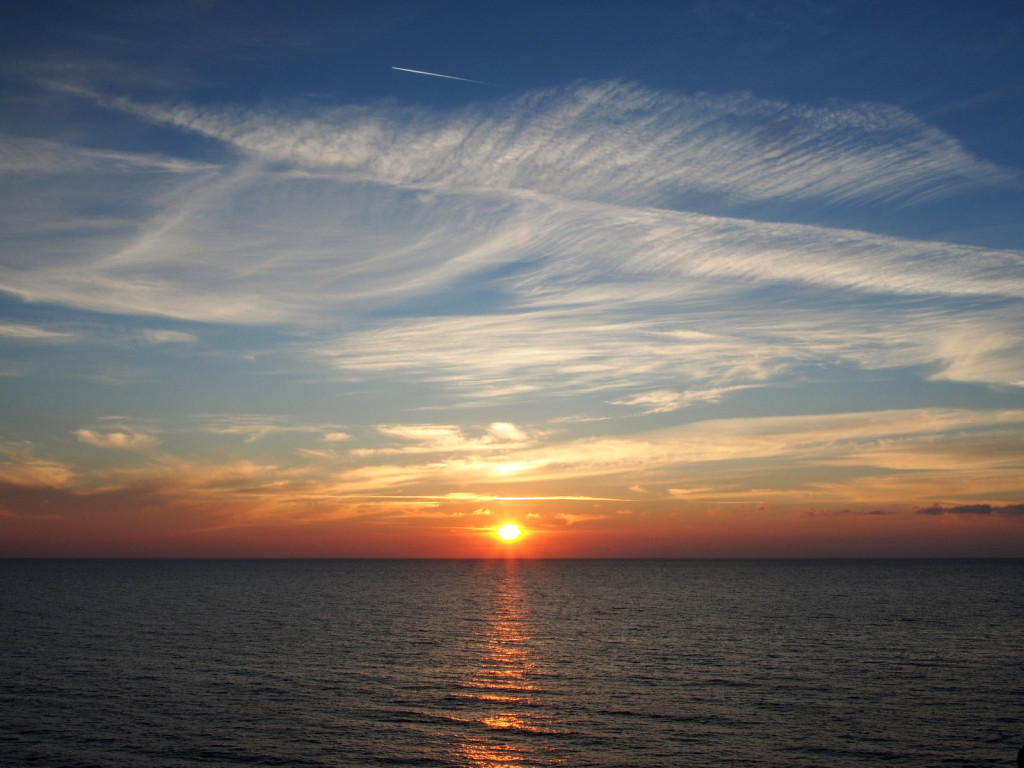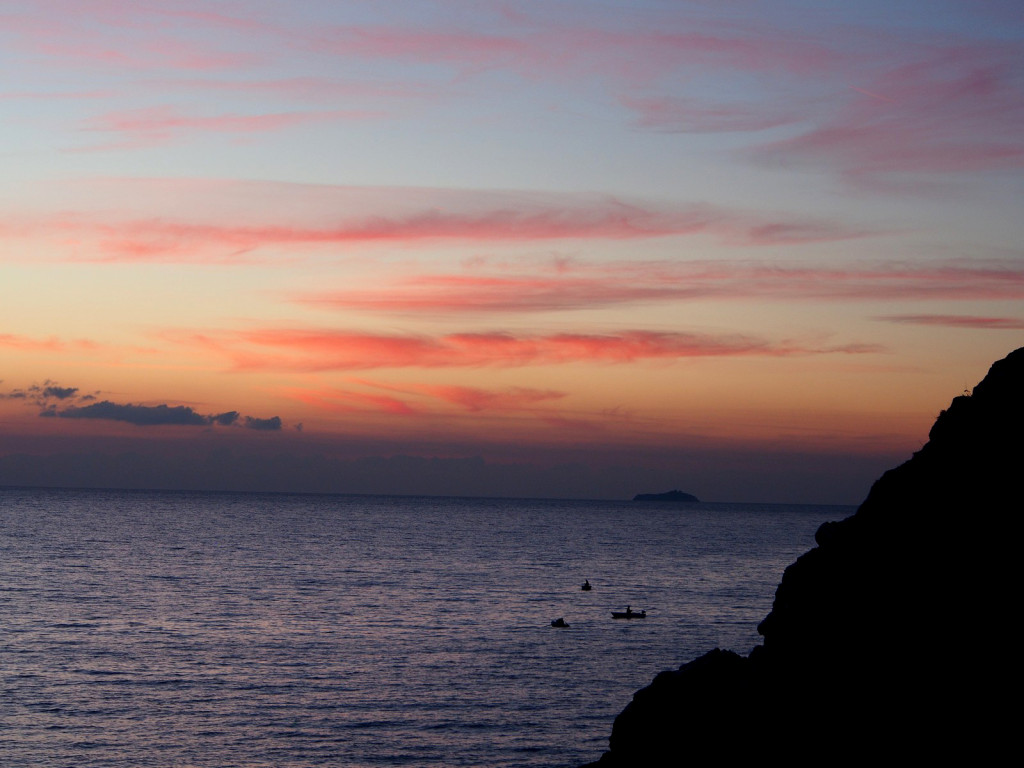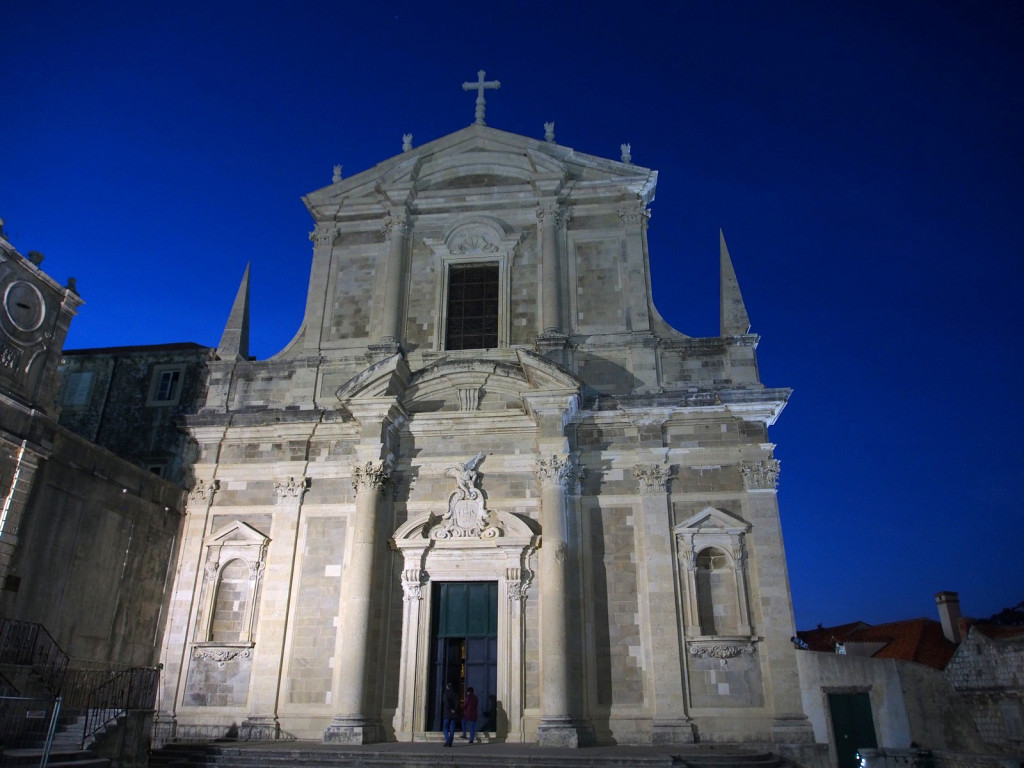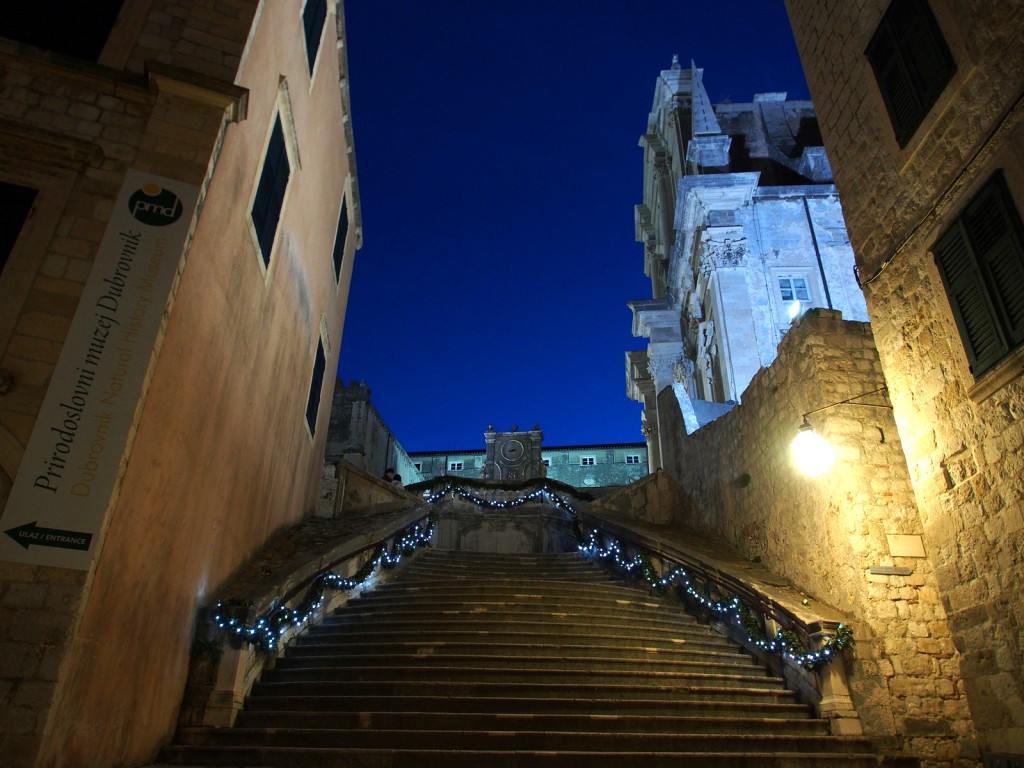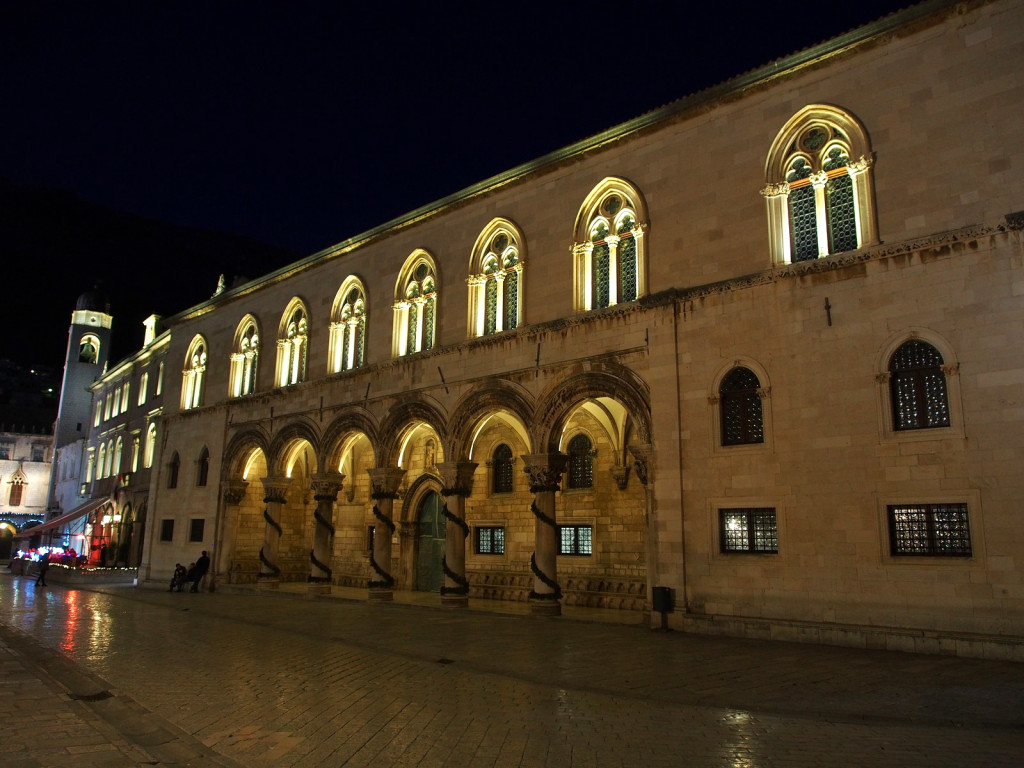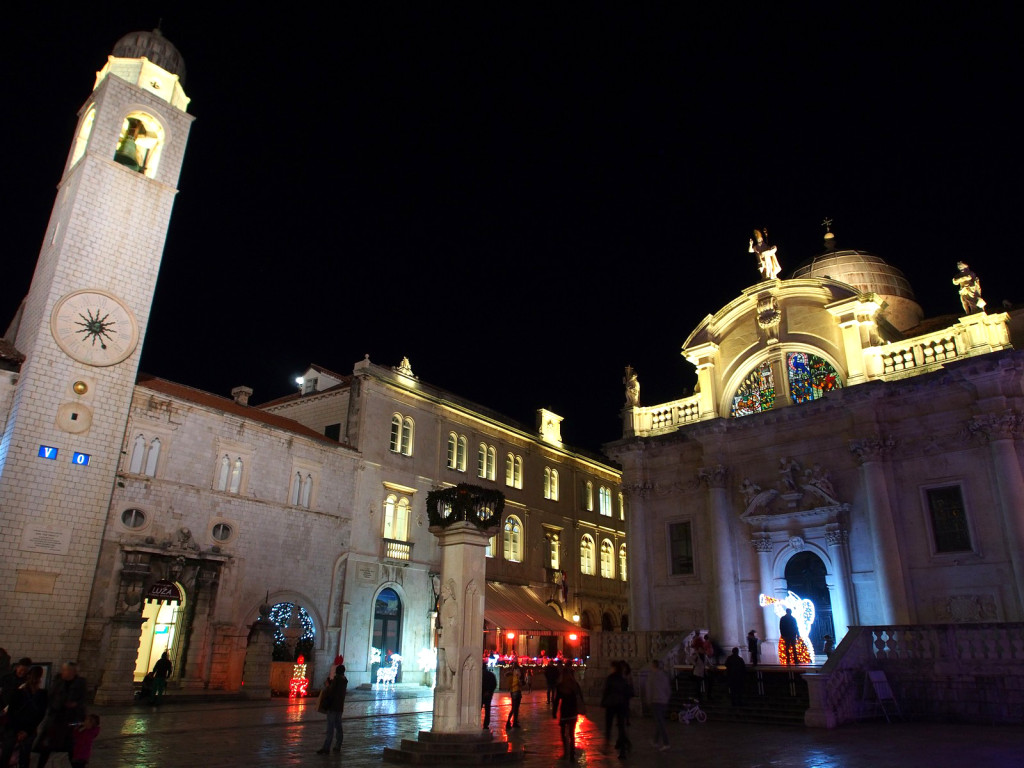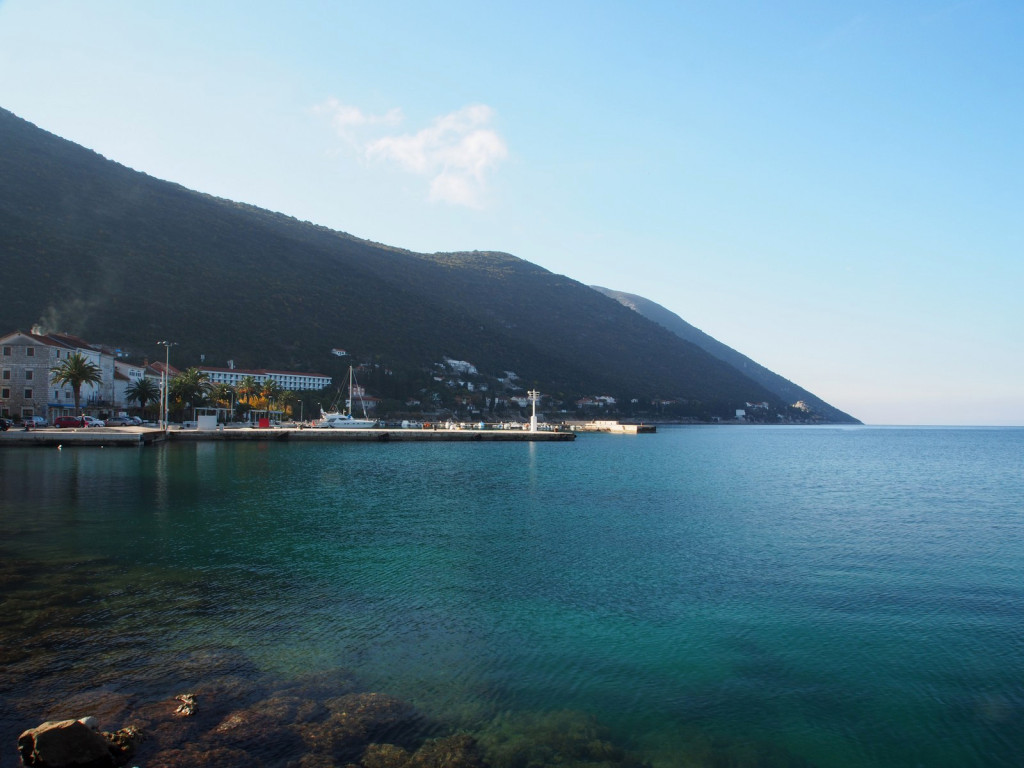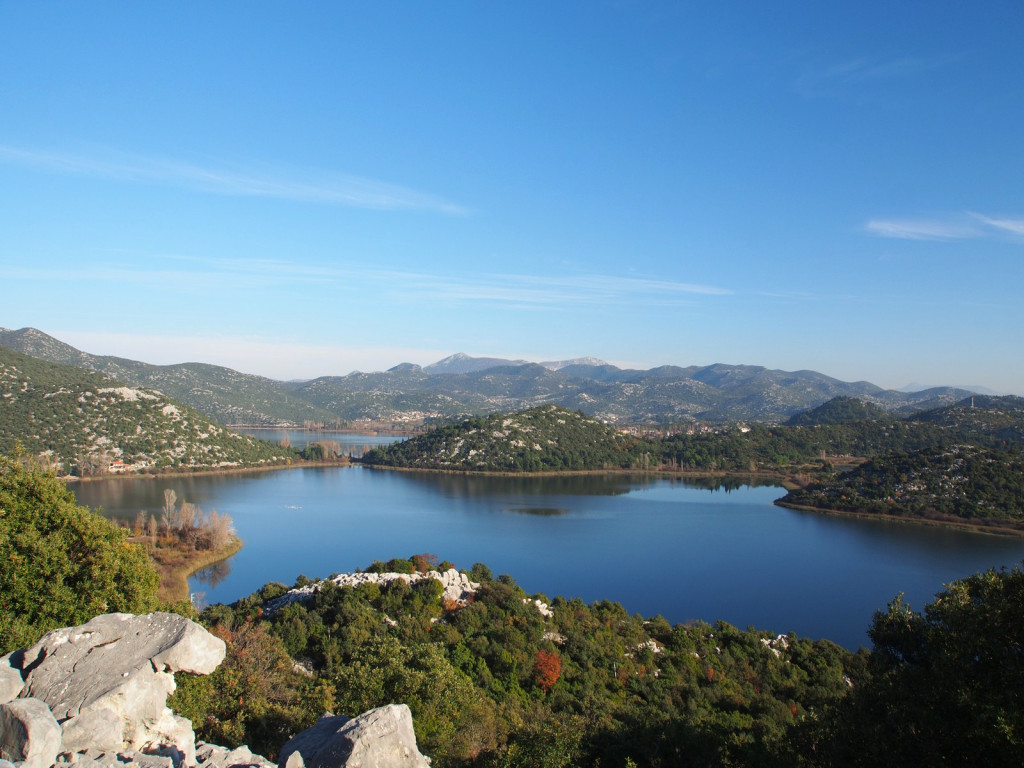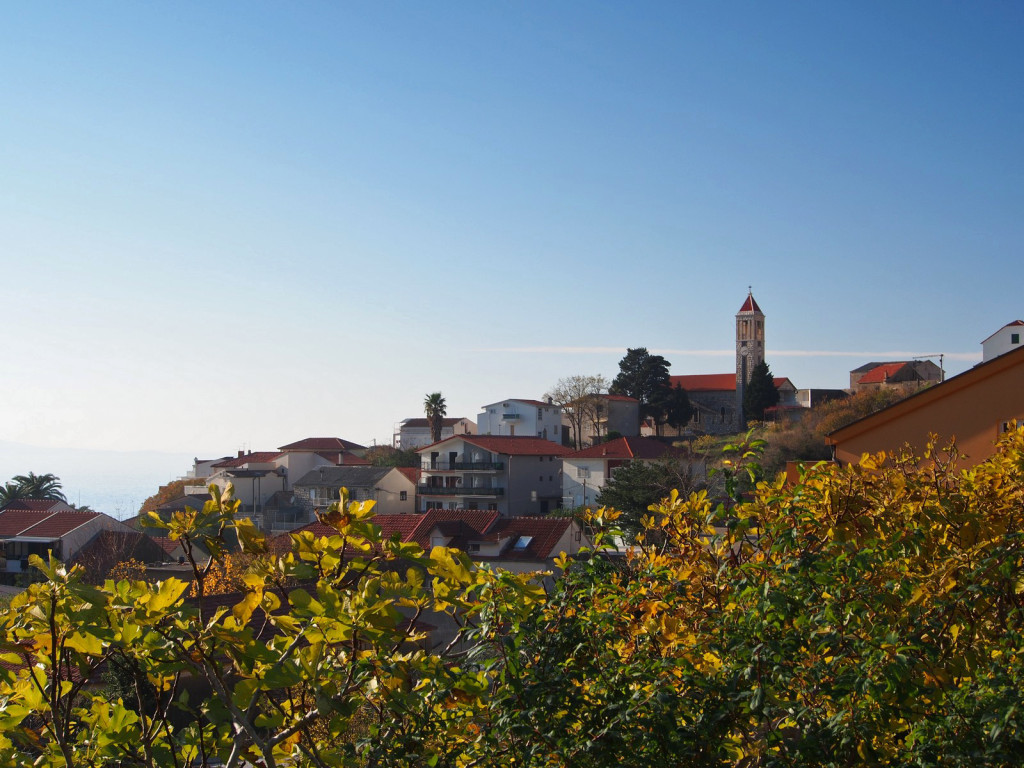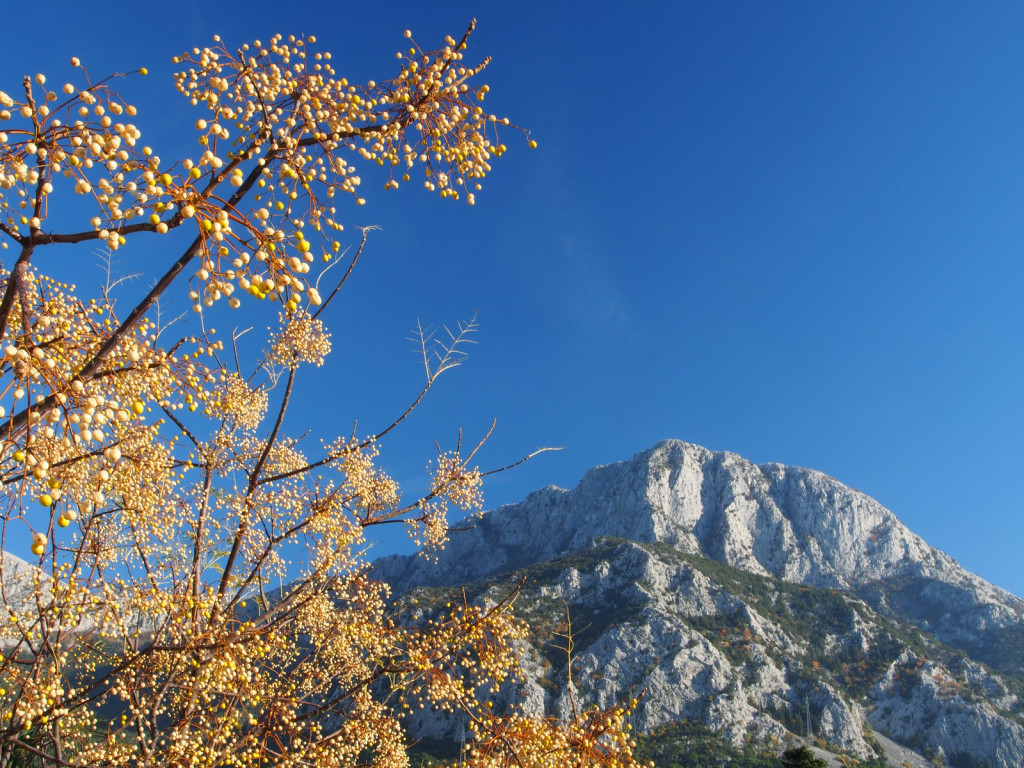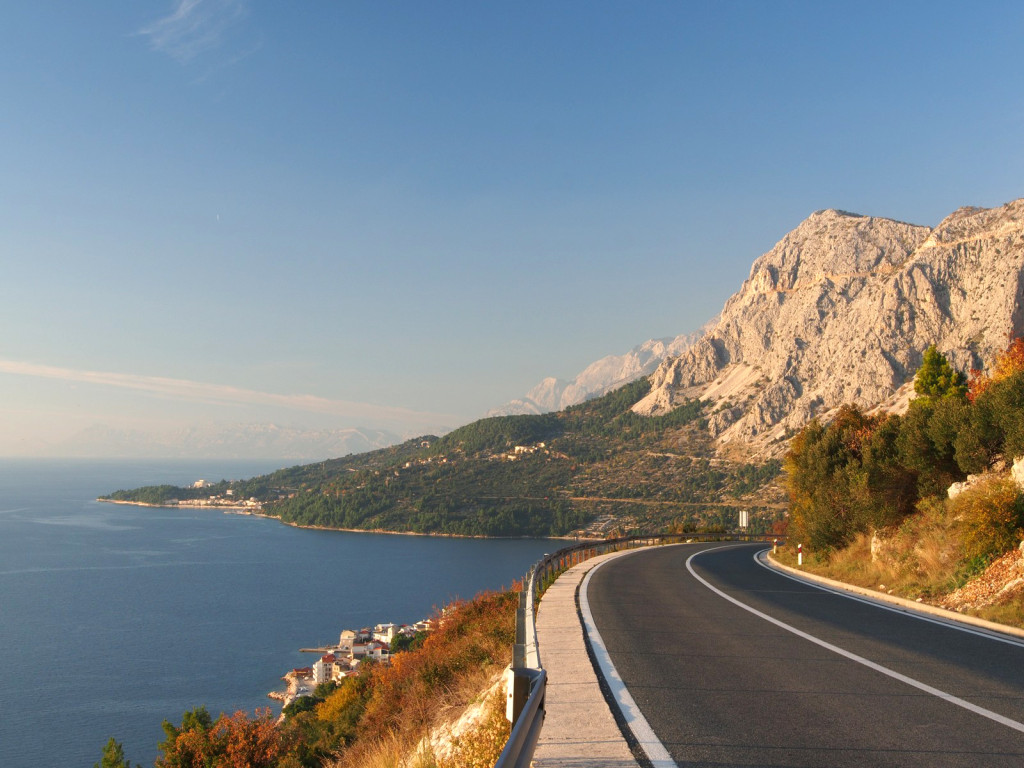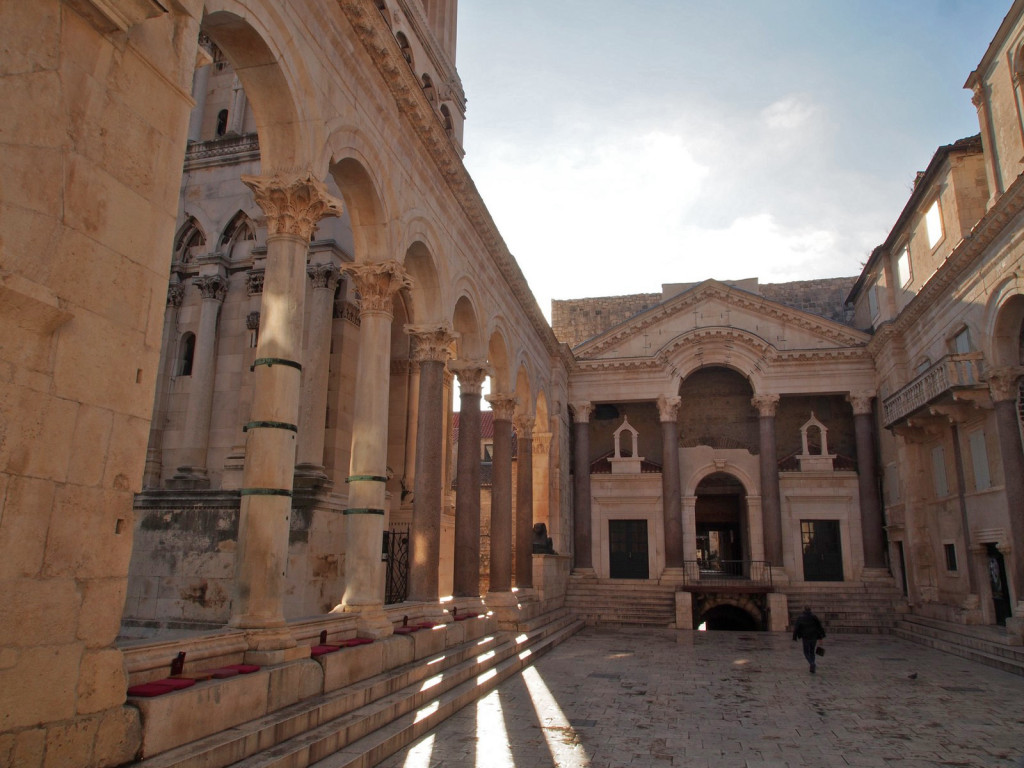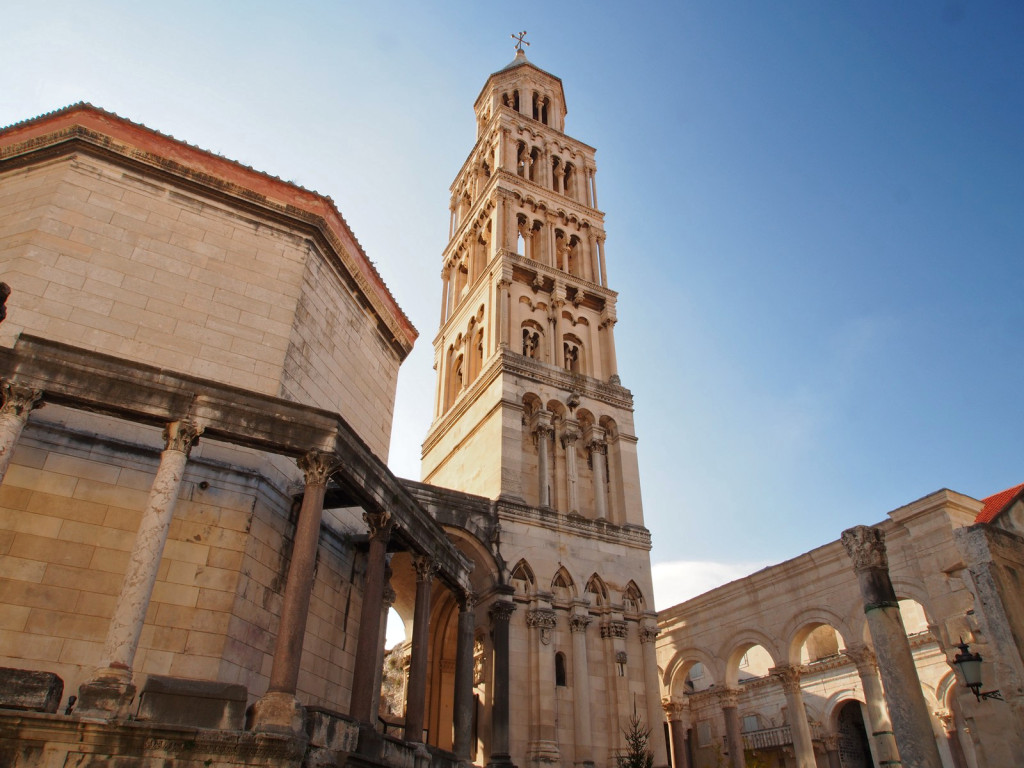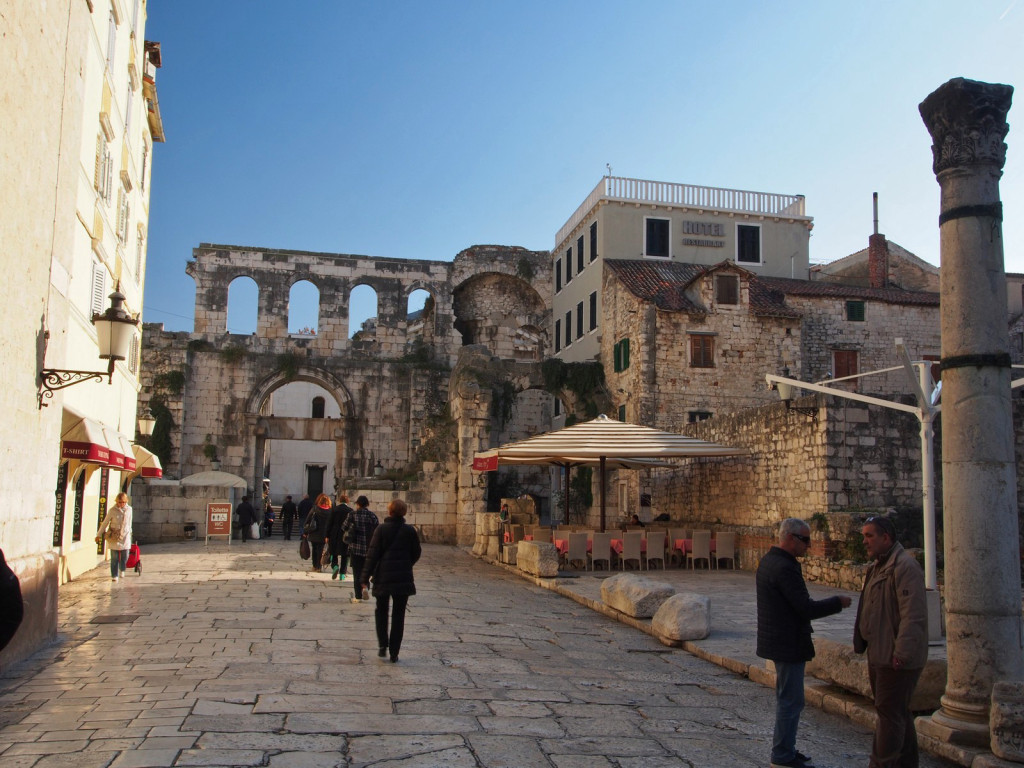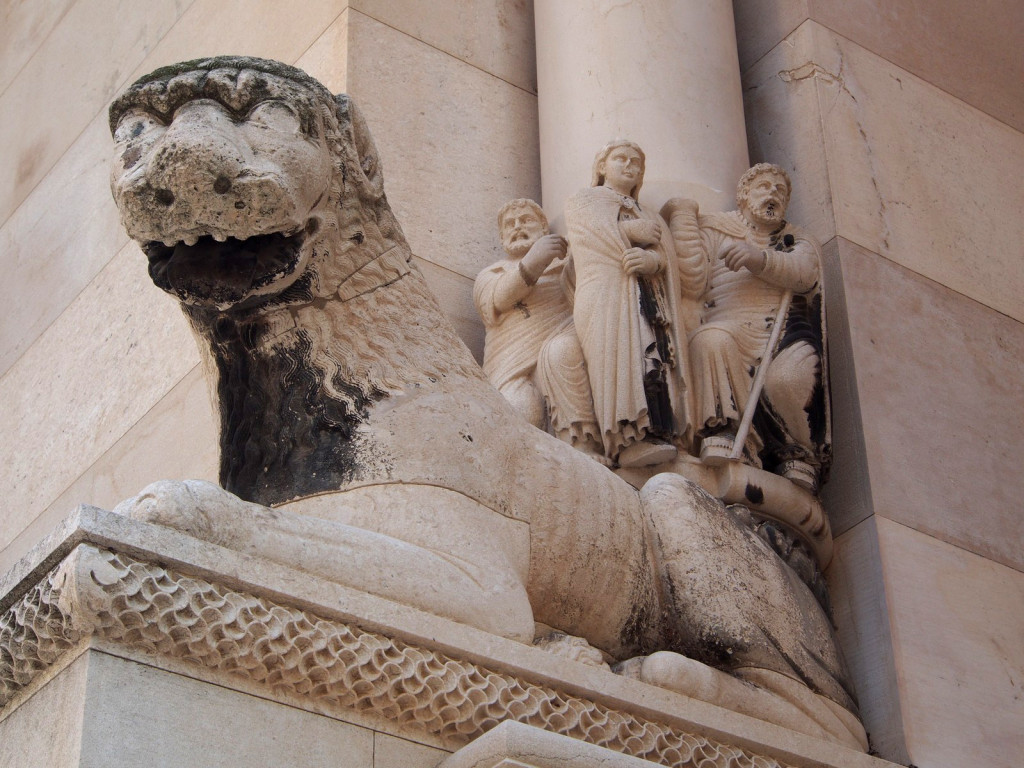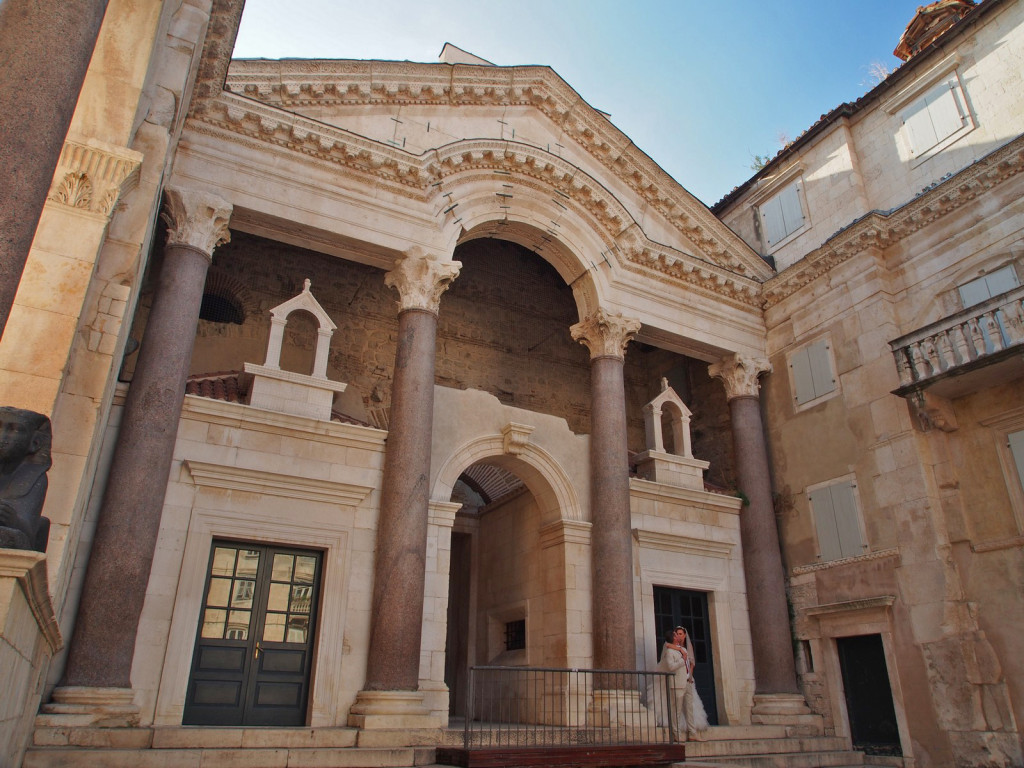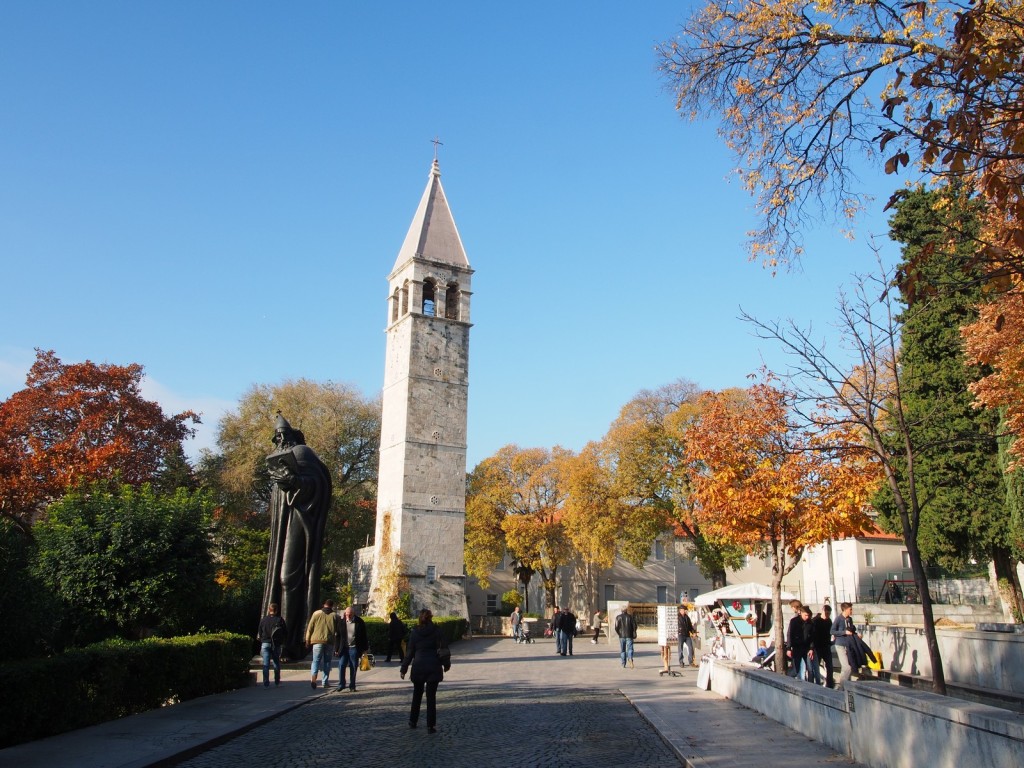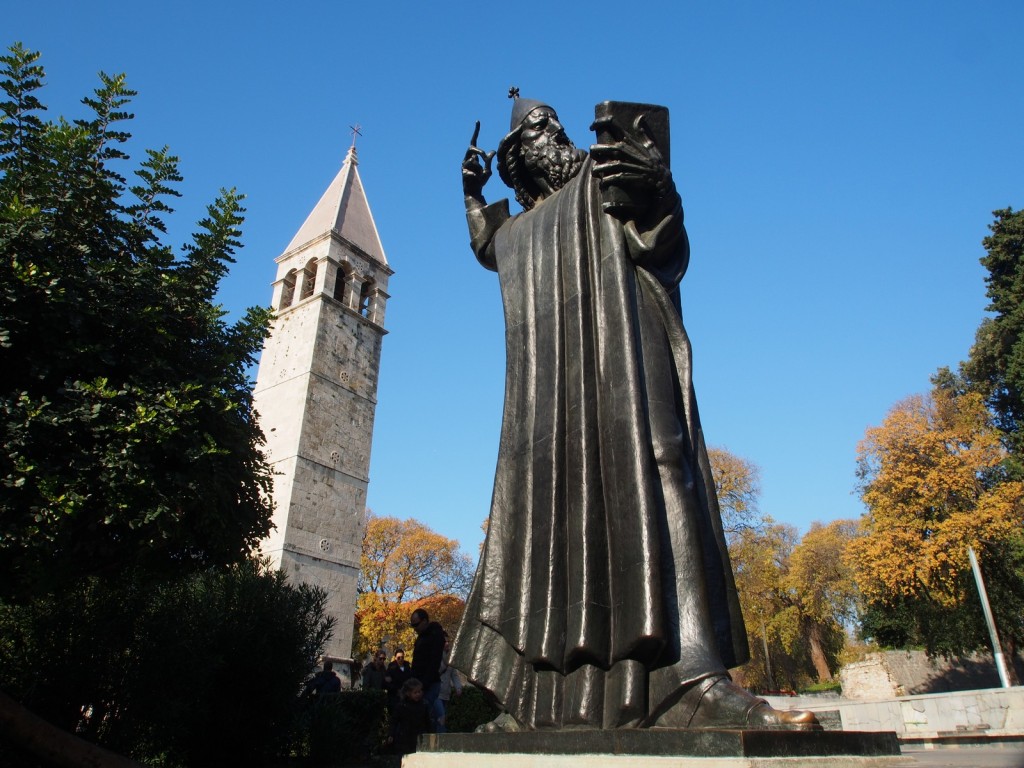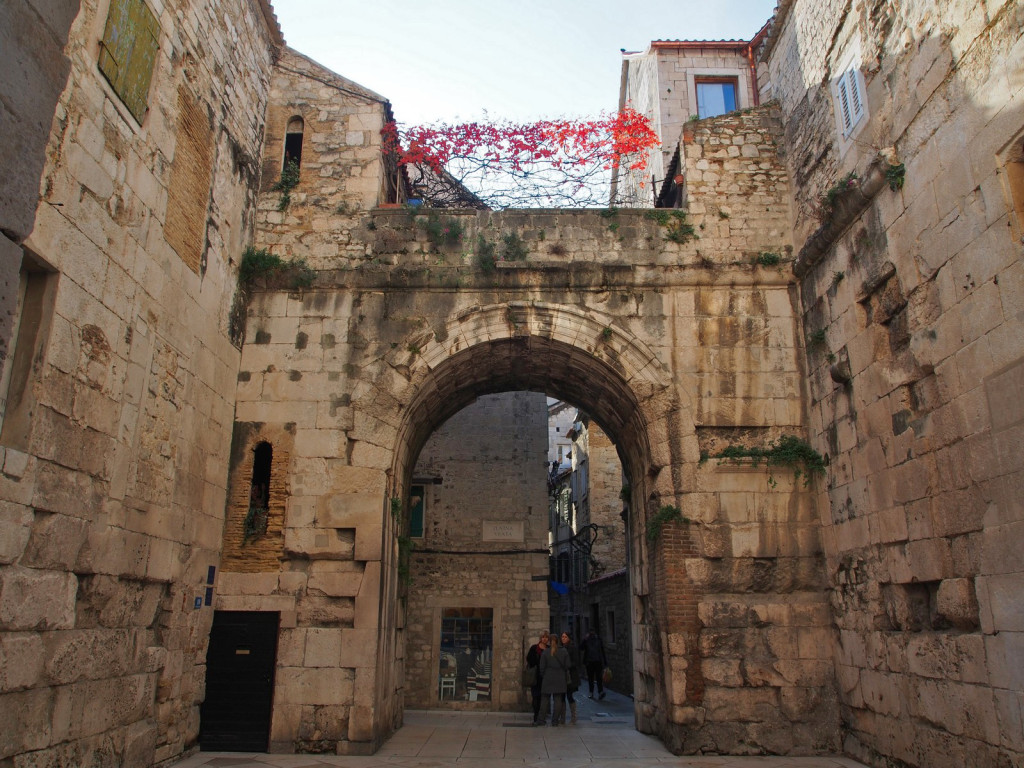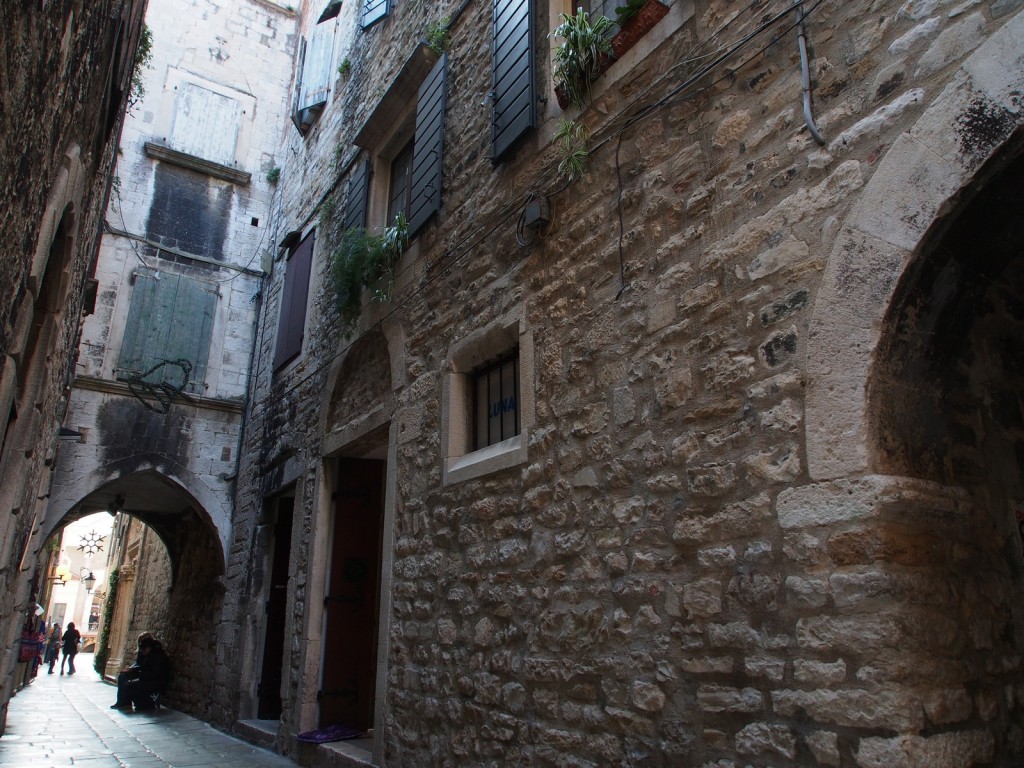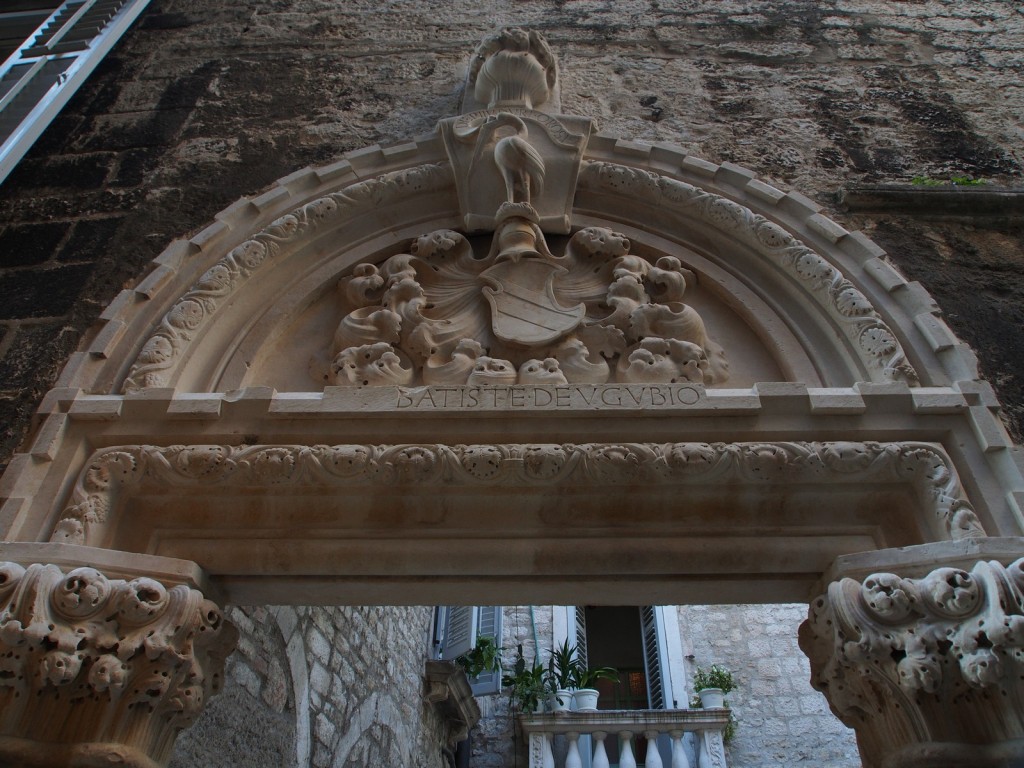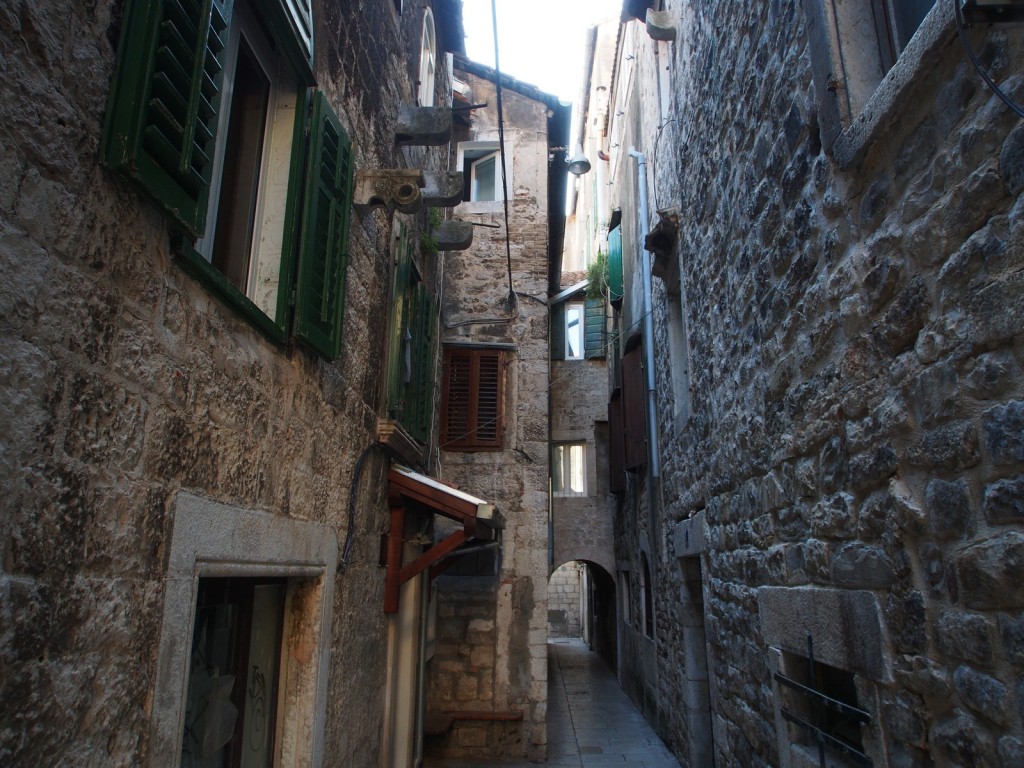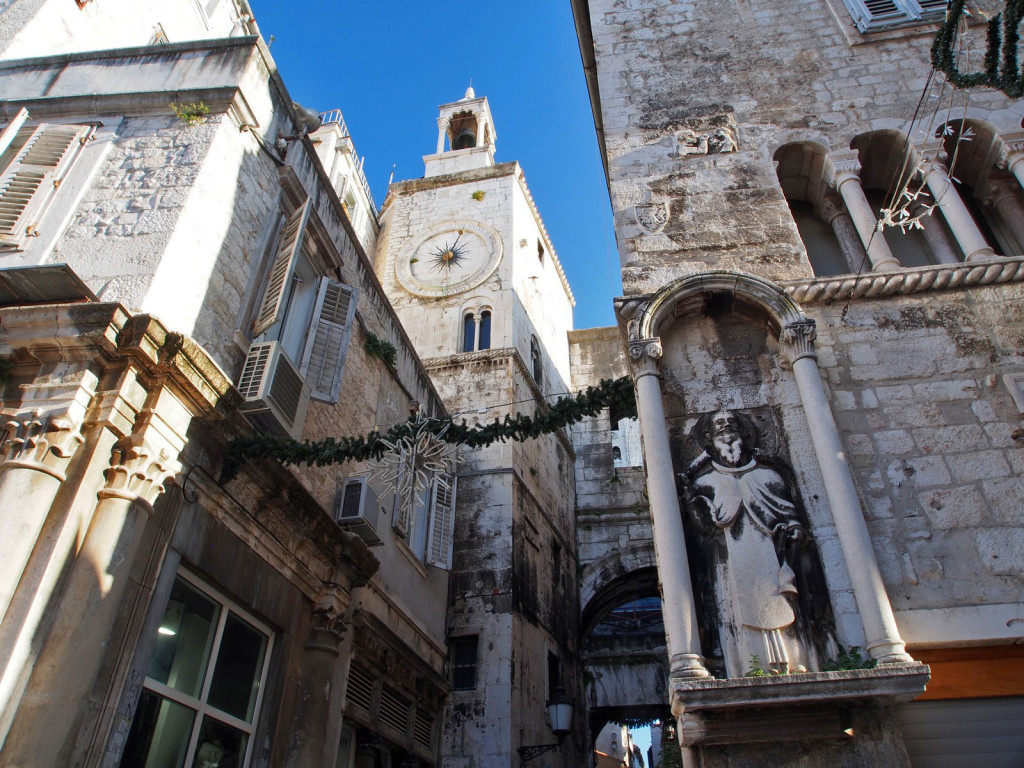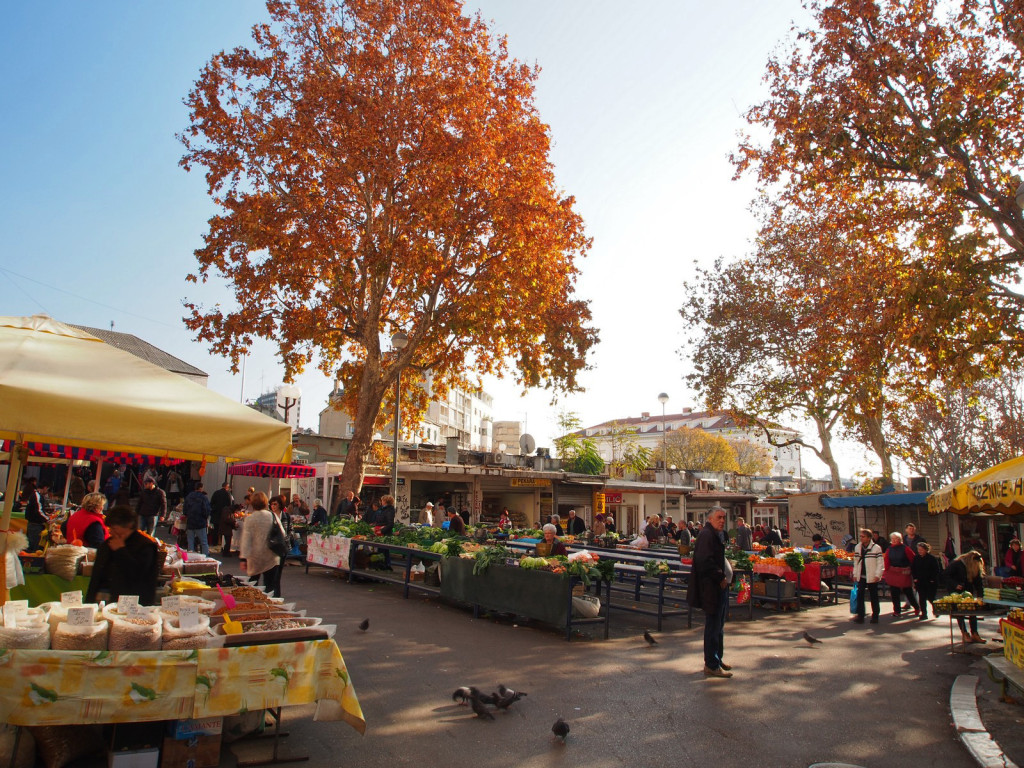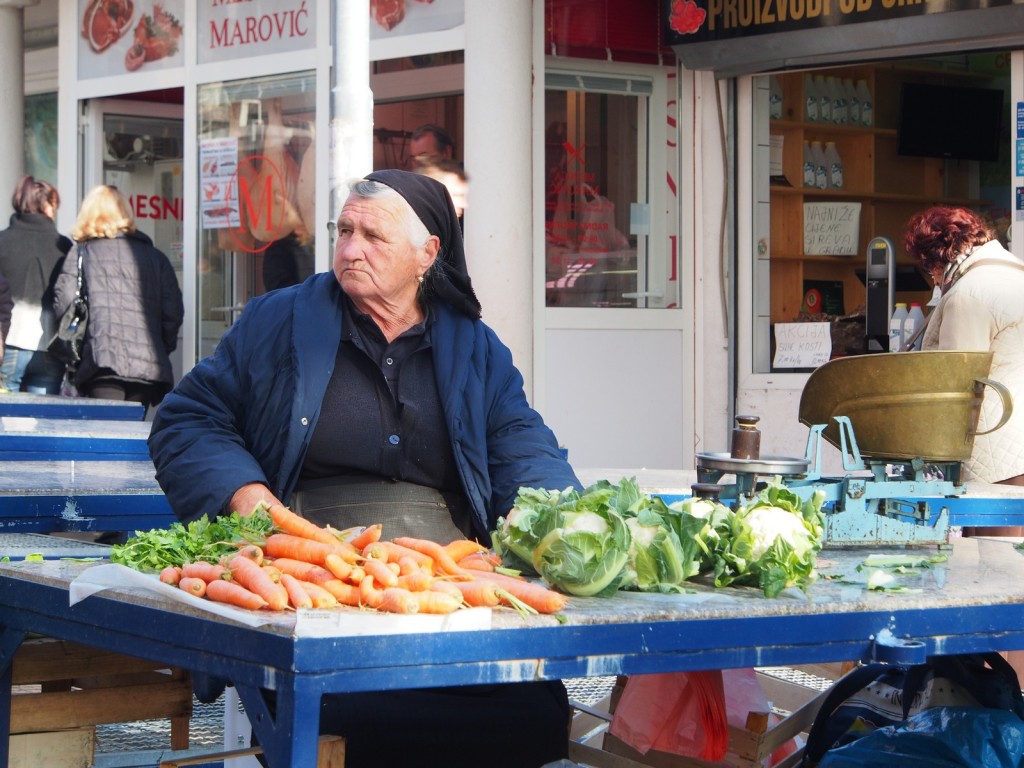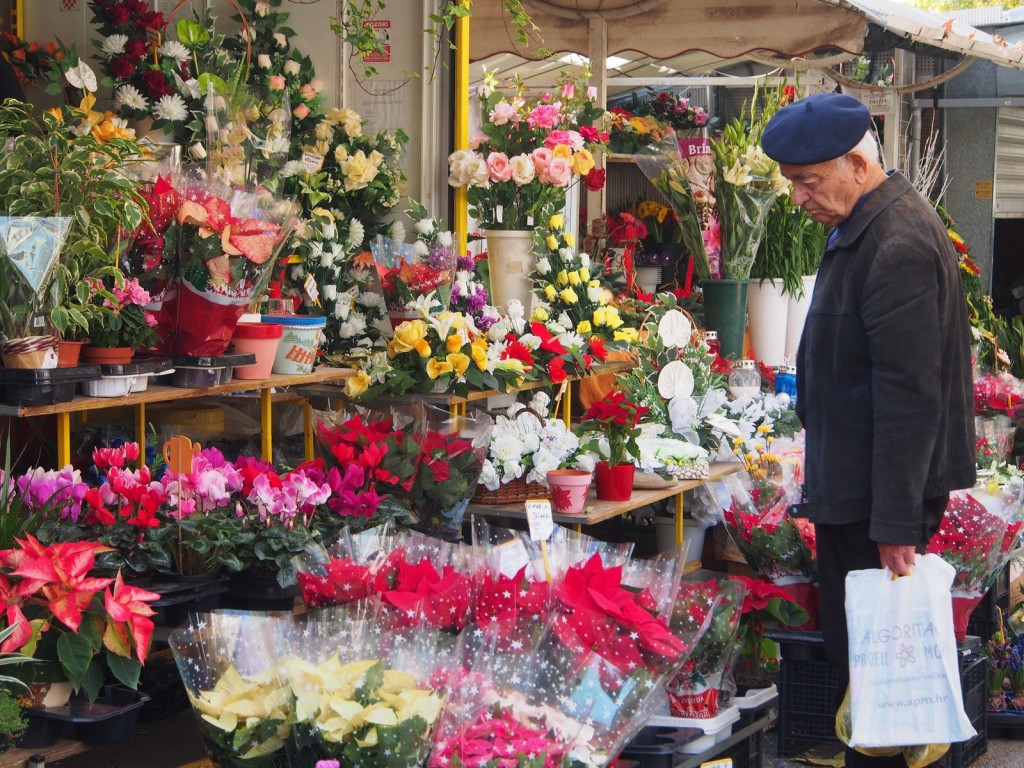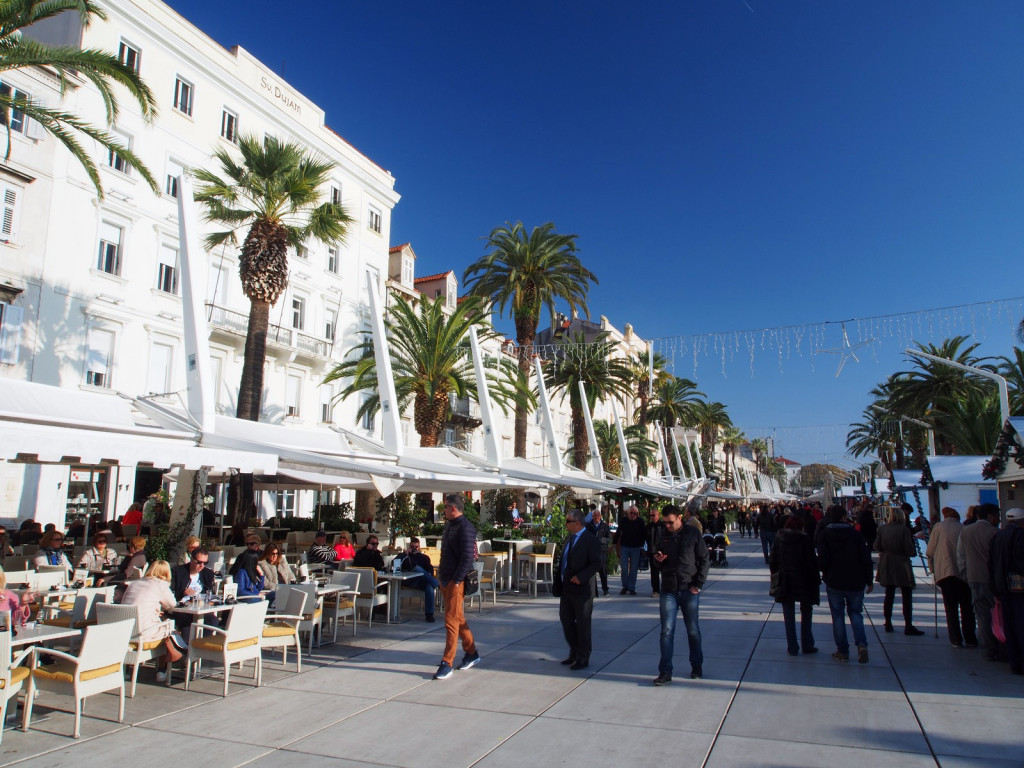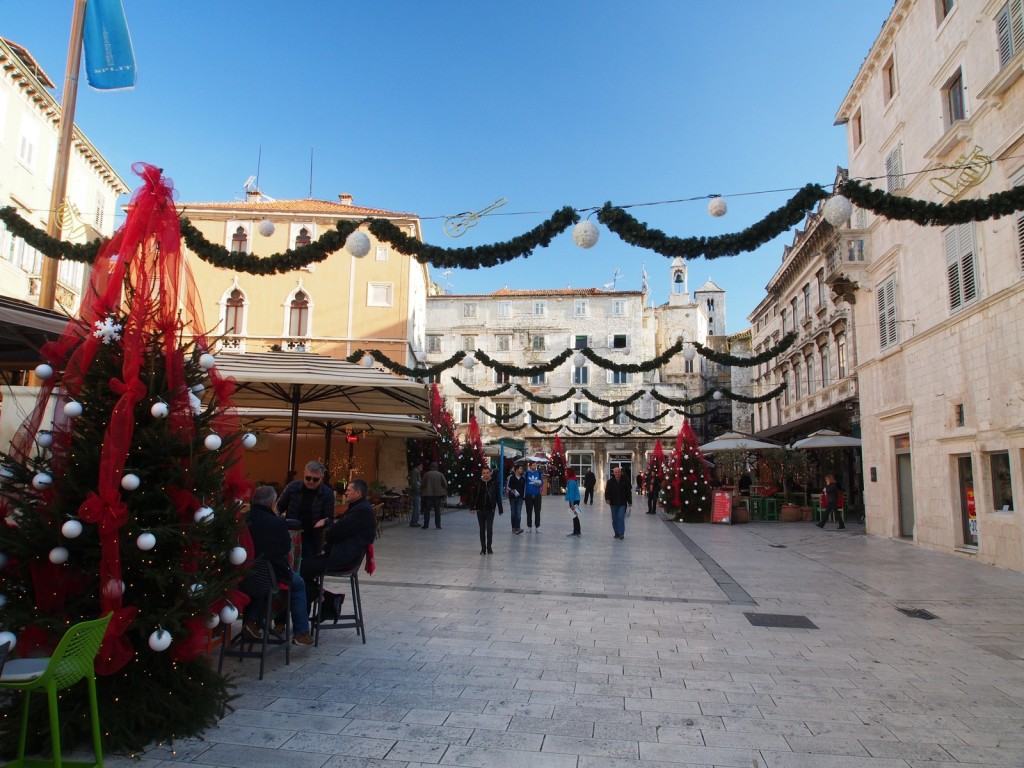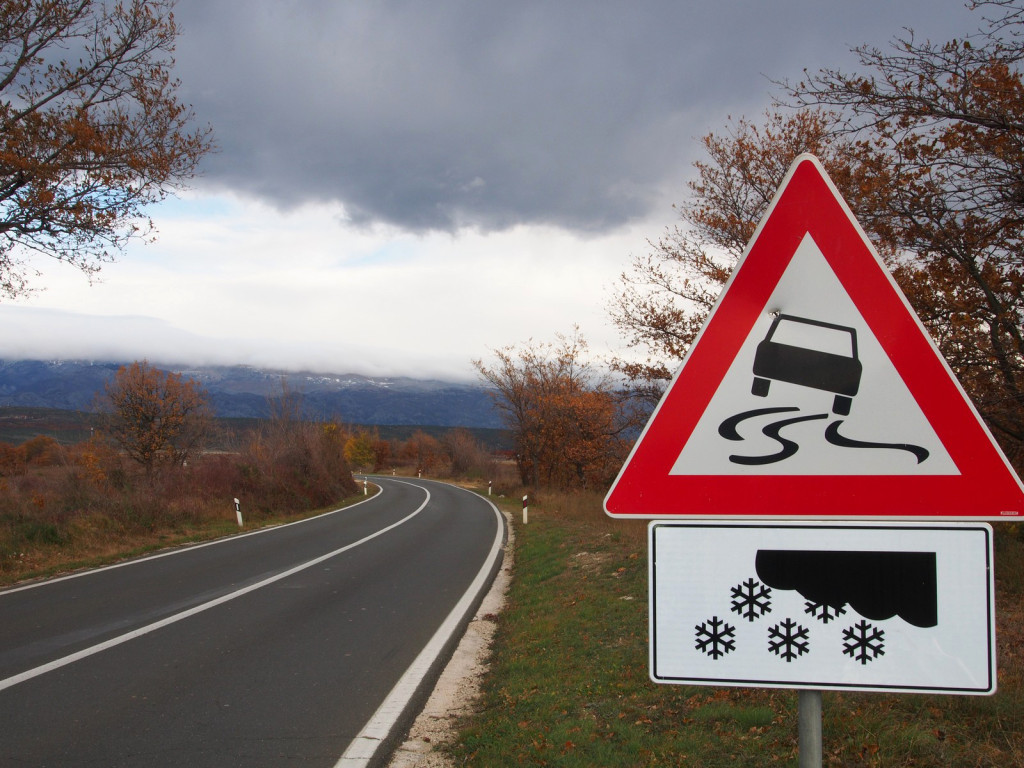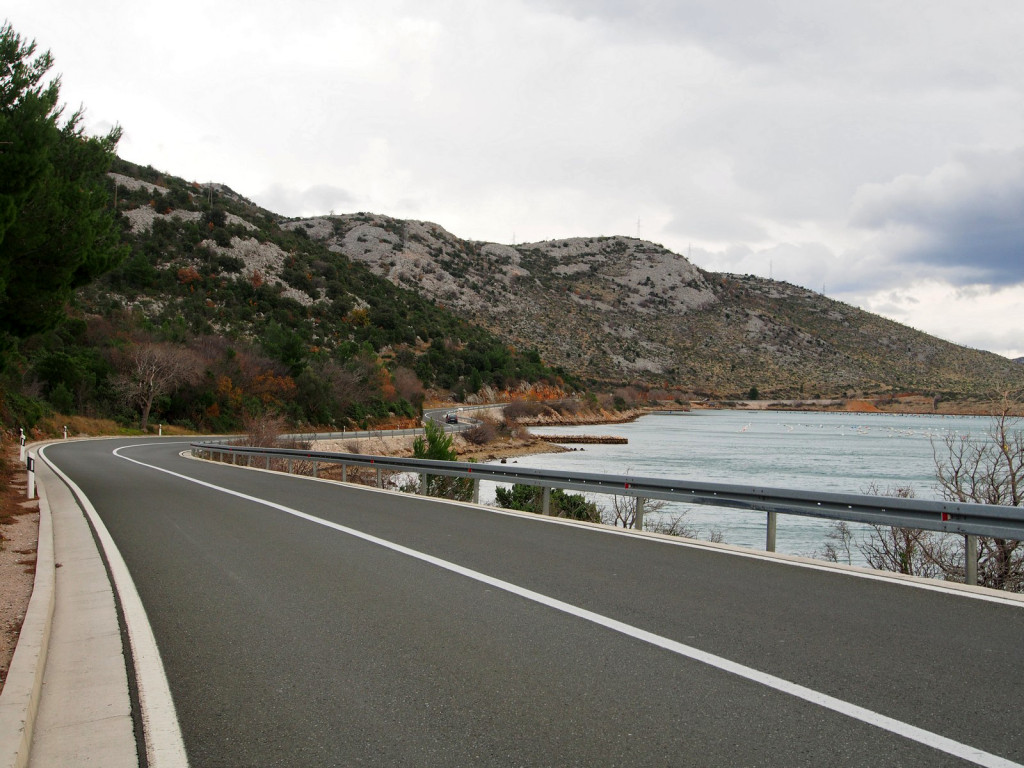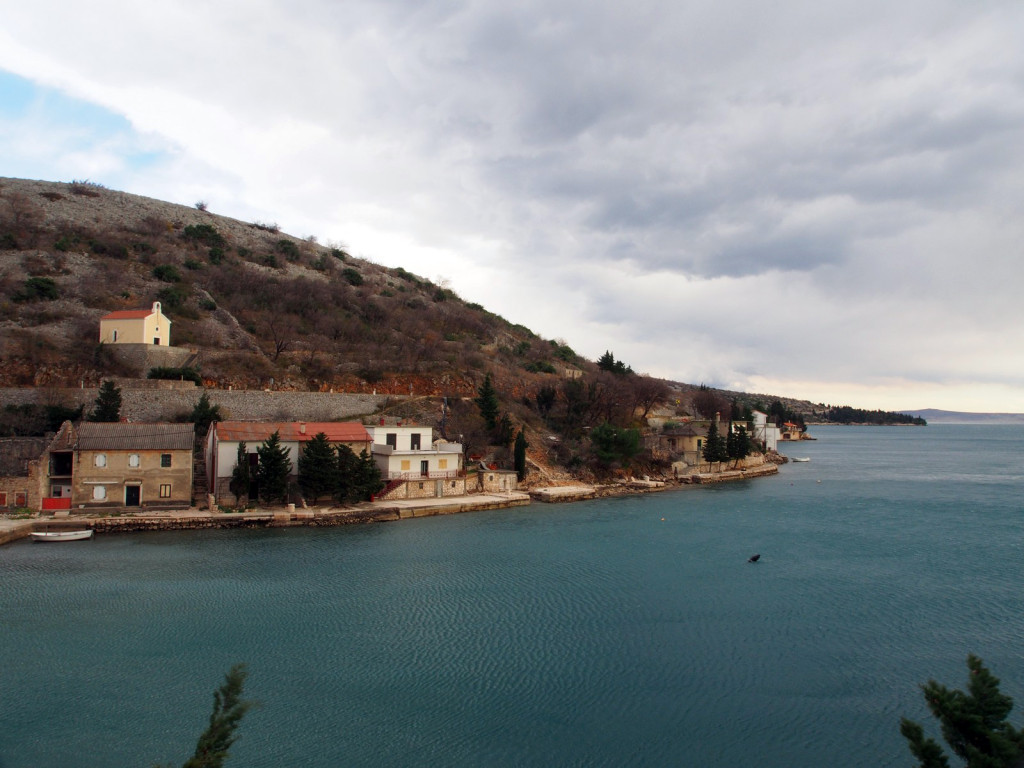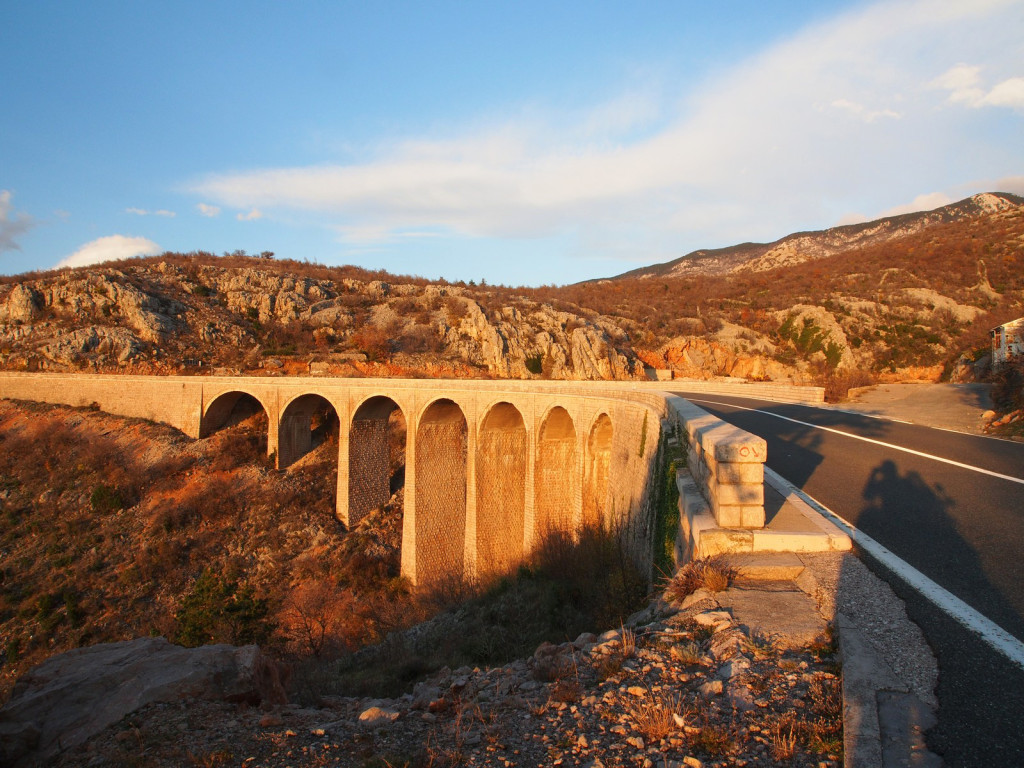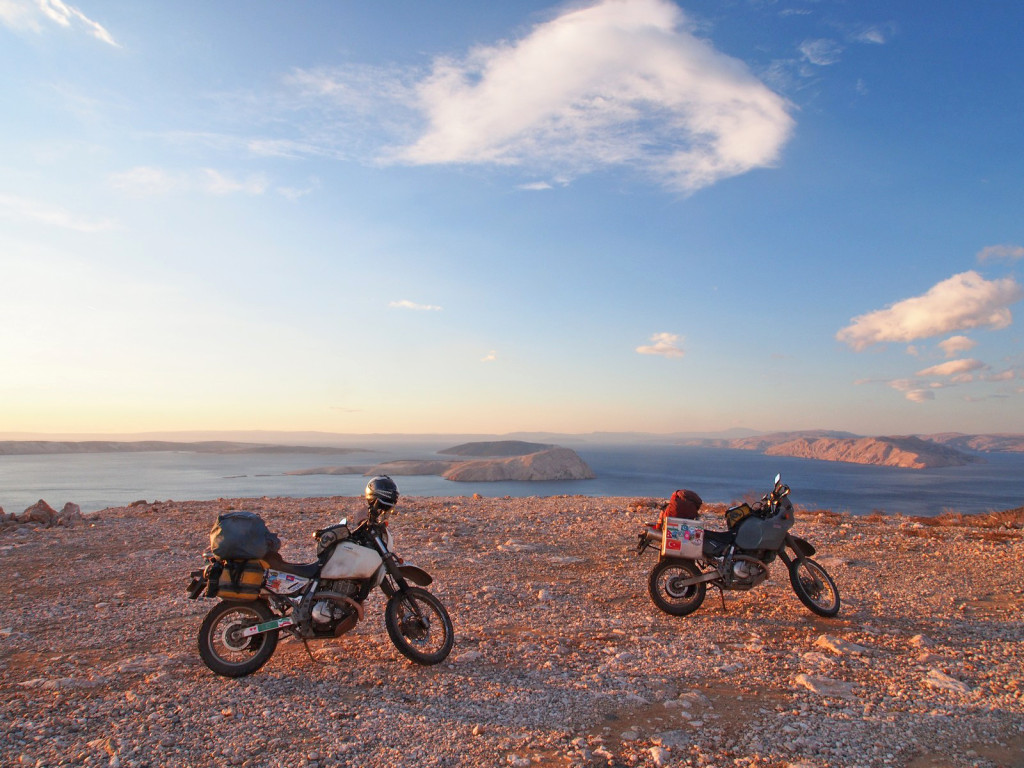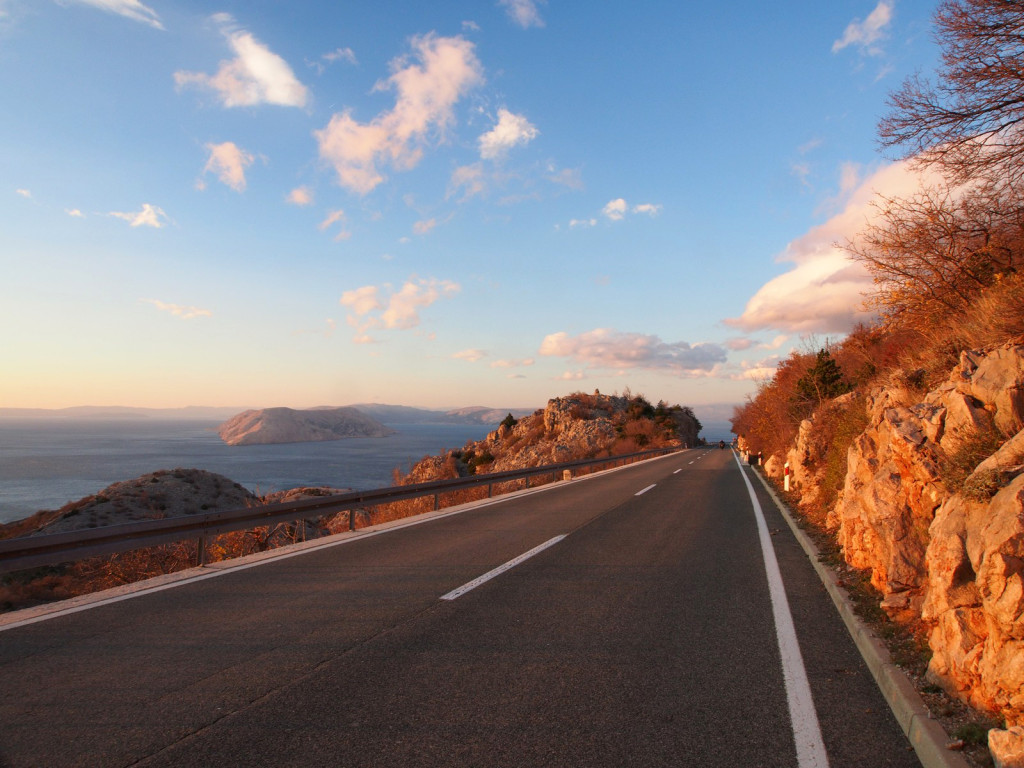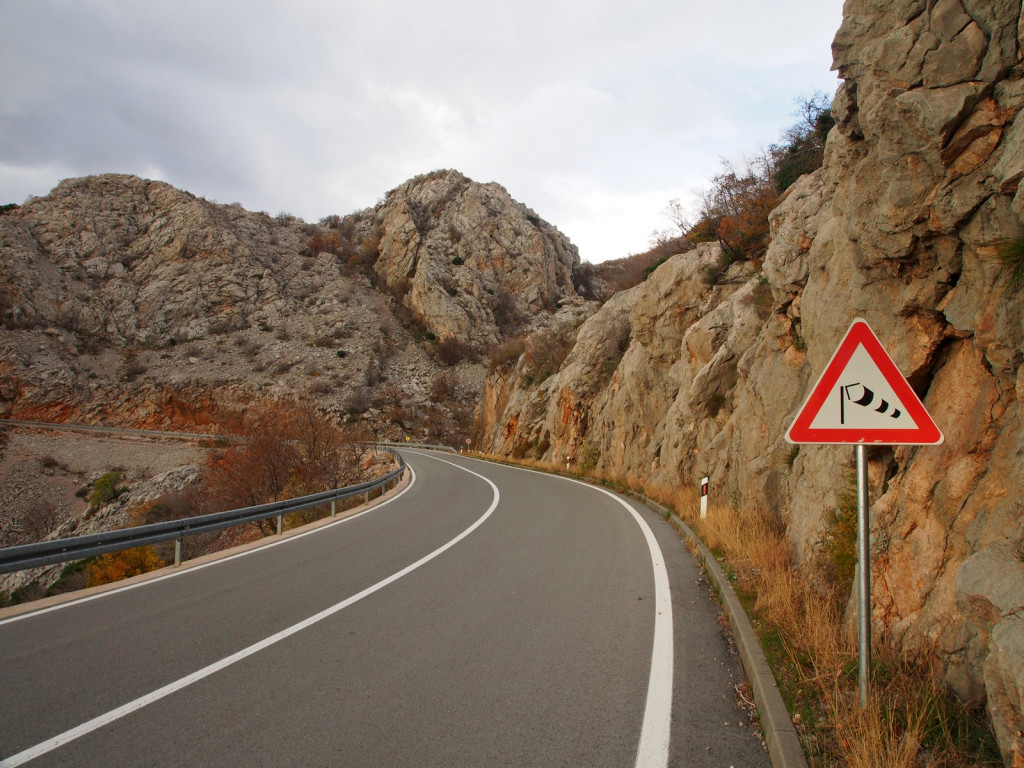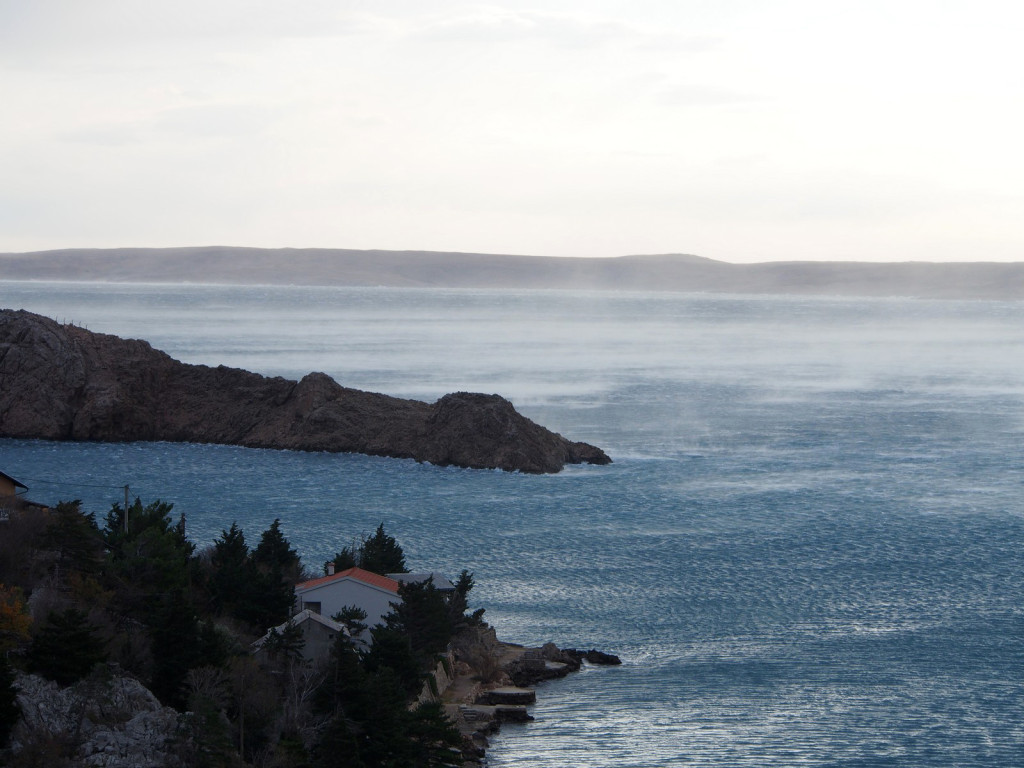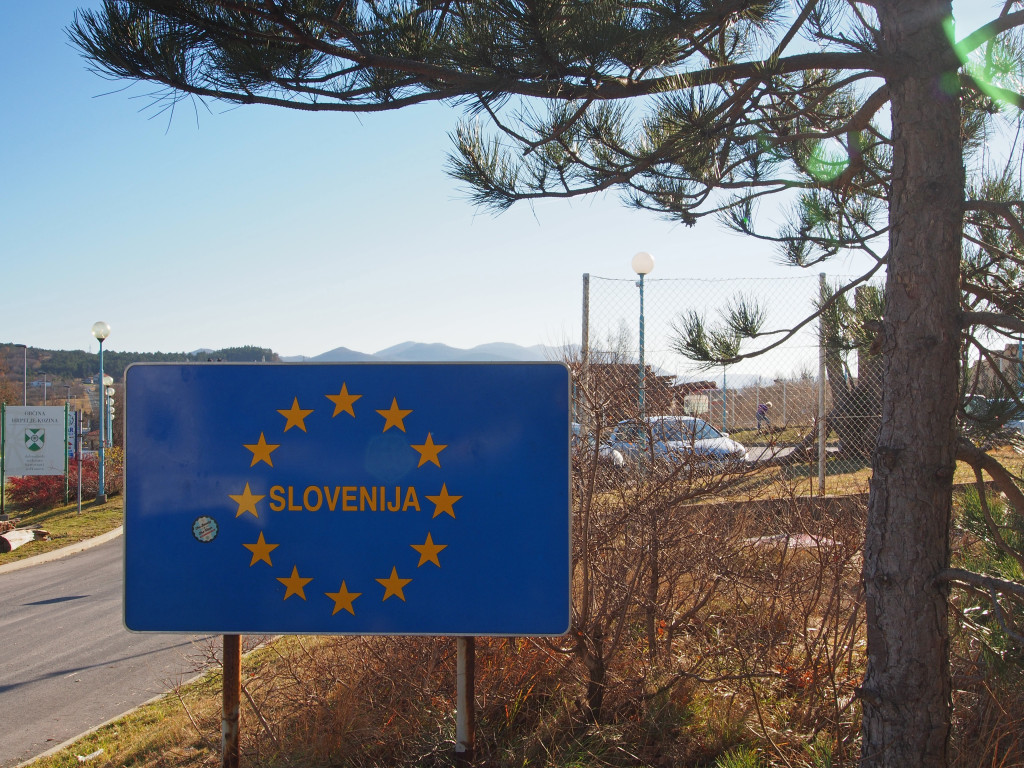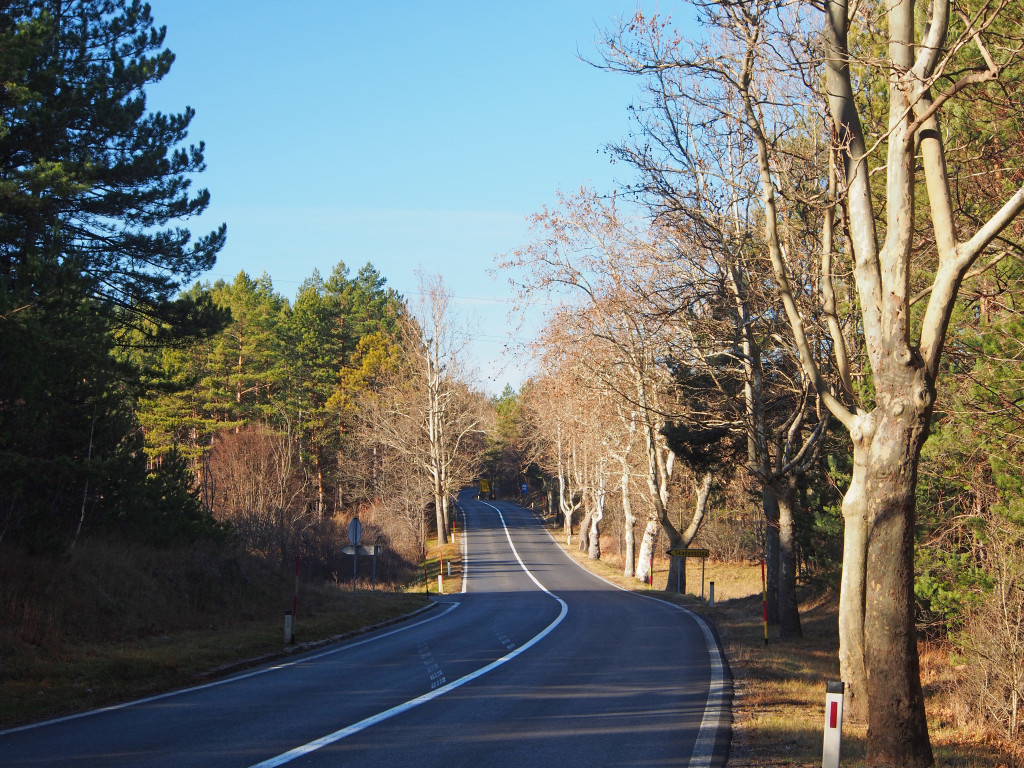We followed the Dalmatian Coast from Montenegro into Croatia, and took a rest day in Dubrovnik. Previously known as the Republic of Ragusa, it was another Venetian-influenced trading port that shared in the riches of Adriatic trade.
Imposing walls still stand tall, preserving the old city within.
The view from the top, both over the city and over the Adriatic Sea, is gorgeous.
As would be expected of a rich merchant city, all the buildings inside the walls are grand stone constructions – whether a private mansion or for public purposes.
Of course the grandest and most impressive buildings are the many churches scattered around the city.
Linking all these are tiny back alleys and side streets, barely wide enough for more than two people to pass.
As always, it’s the small details that catch the eye and provide most of the interest, once the initial awe of the grand structures has worn off.
Just outside the western walls, there’s a small café on the cliffside looking out over the sea – a perfect place to watch the sun set over the water.
The city has placed floodlights around most of the monuments, to provide illumination at night.
Leaving the city heading north the next morning, we faced a choice – follow the main part of the coast and have to cross another pair of border posts for a 20 kilometre strip of Bosnia, or follow a narrow peninsula northwest and catch a ferry back across the gap. Preferring just to ride without the potential headaches, we chose the latter option. A quick and painless boat ride found us riding through lake country and tiny villages, heading for our next destination, Split.
Split is another ancient town, with a strong history dating back to Roman times – the old centre of the city is based around the remains of Diocletian’s Palace: the only Roman Emperor to retire from the post (instead of dying in it), he spent his latter years tending his gardens on the Dalmatian Coast. The centrepiece of the city is his palace and the Basilica raised on the site later.
The rest of the city in interesting in similar ways as so many other ancient centres – tiny pedestrian alleys, richly textured stone and masonry, cobblestones worn smooth from the passage of centuries’ worth of feet.
Outside the ancient centre, life goes on as normal – a small open-air market sits just outside the walls, and the seaside boulevard holds a popular Christmas market selling mulled wine and hot food.
Again heading north, and still following the coast, we could take the fast and easy way towards Slovenia and Italy – the tollway – or the small coast road. Despite looming bad weather, we stuck to the coast, and in doing so found one of the best roads of the entire trip. It’s apparently quite popular with European motorcyclists, and understandably so.
The wind was strong enough to blow us around by more than a metre with each gust, and was lifting huge amounts of spray off the water.
The last section of northern Croatia, away from the sea, was cold and relatively unexciting. The border crossing into Slovenia – and the Schengen Zone, so effectively our last border until the UK – was only notable in that we got shouted at by the border guard to move! We thought he wanted more paperwork, but he was done with us.
We spent all of half an hour in Slovenia, blasting through on the way to Italy and our next stop, Venice.

